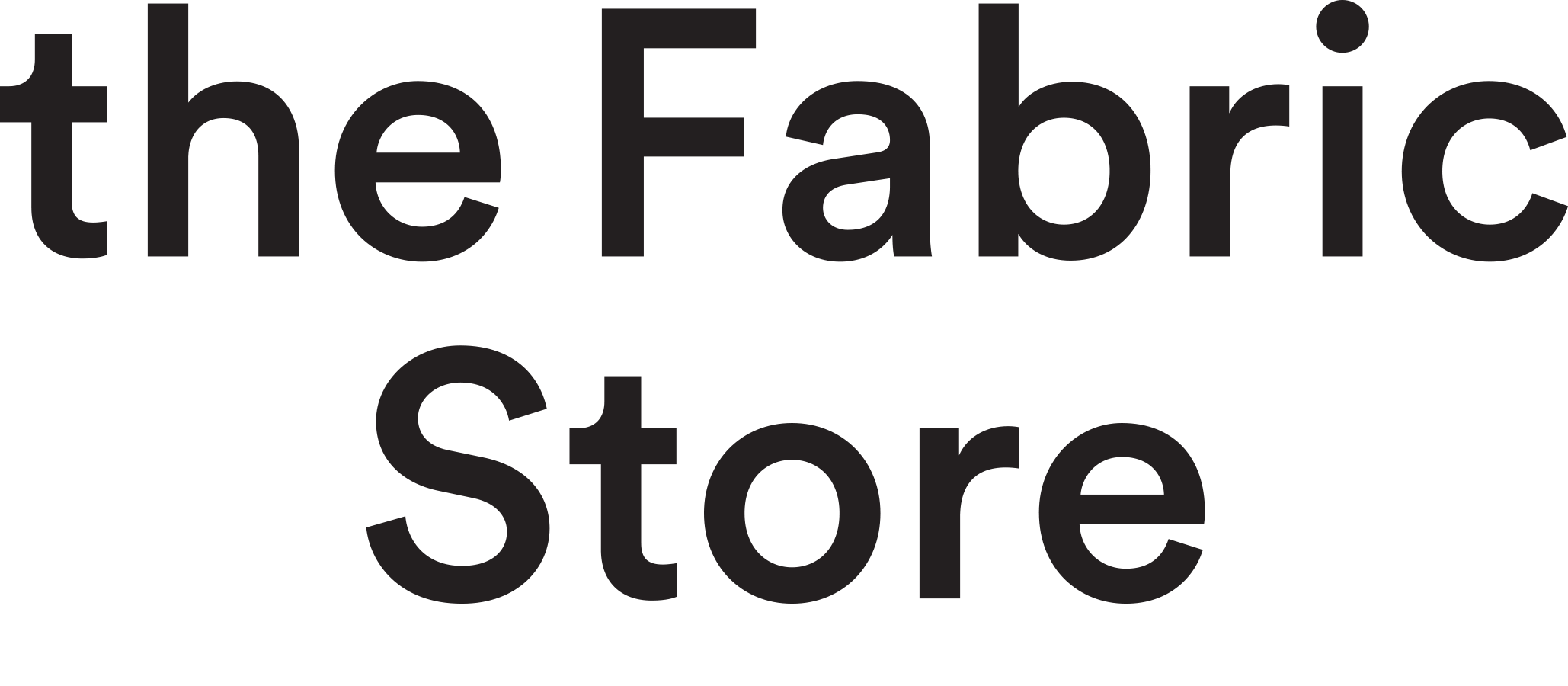1 — Interfacing and Pre-Pressing

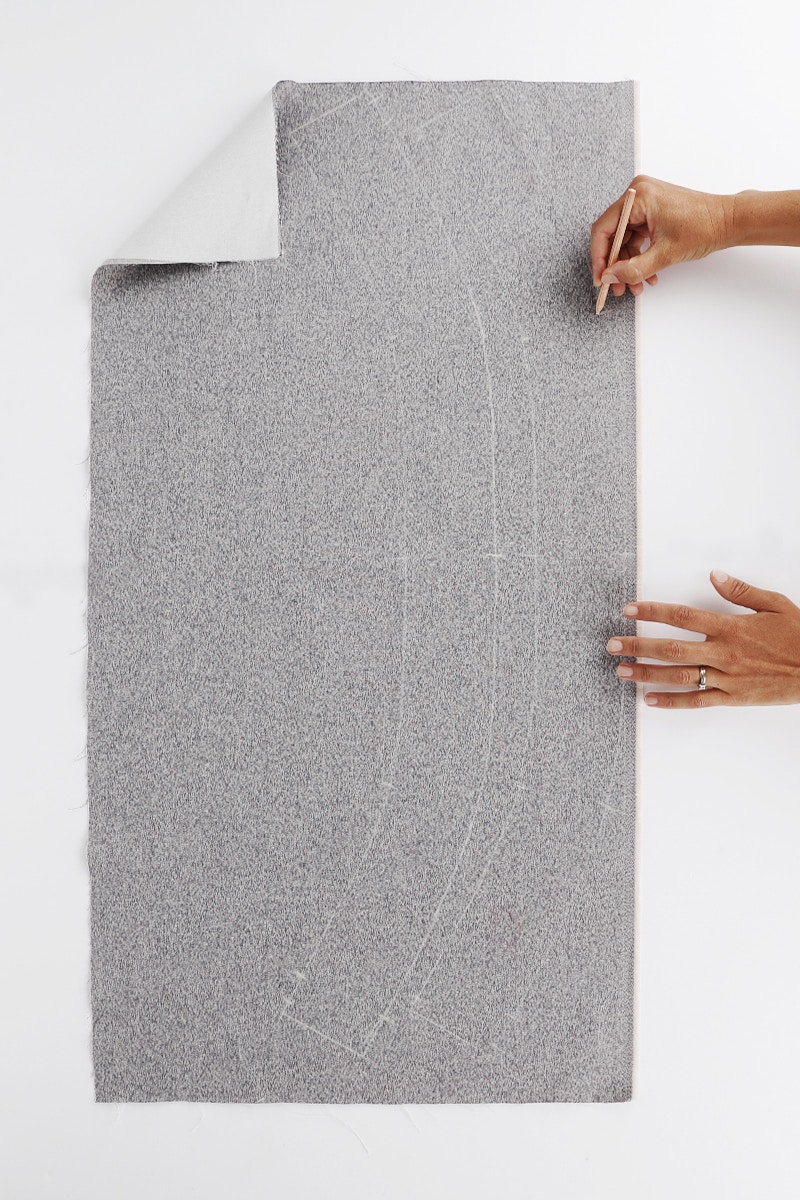
To ensure accuracy, and to save time, we recommend block fusing your waistband and waistband facing before you begin sewing. Block fusing is when you apply fusible interfacing to a section fabric before cutting out the pattern pieces. Doing it this way mean your pieces won’t stretch out of shape, which can happen if you piece fuse after. It also saves a bit of time as you only need to cut out once!
Once you have block fused your main fabric, trace around the waistband and waistband facing pieces and cut them out.
If you choose to piece fuse keep your pattern pieces close by for reference and make sure they don't stretch out of shape.
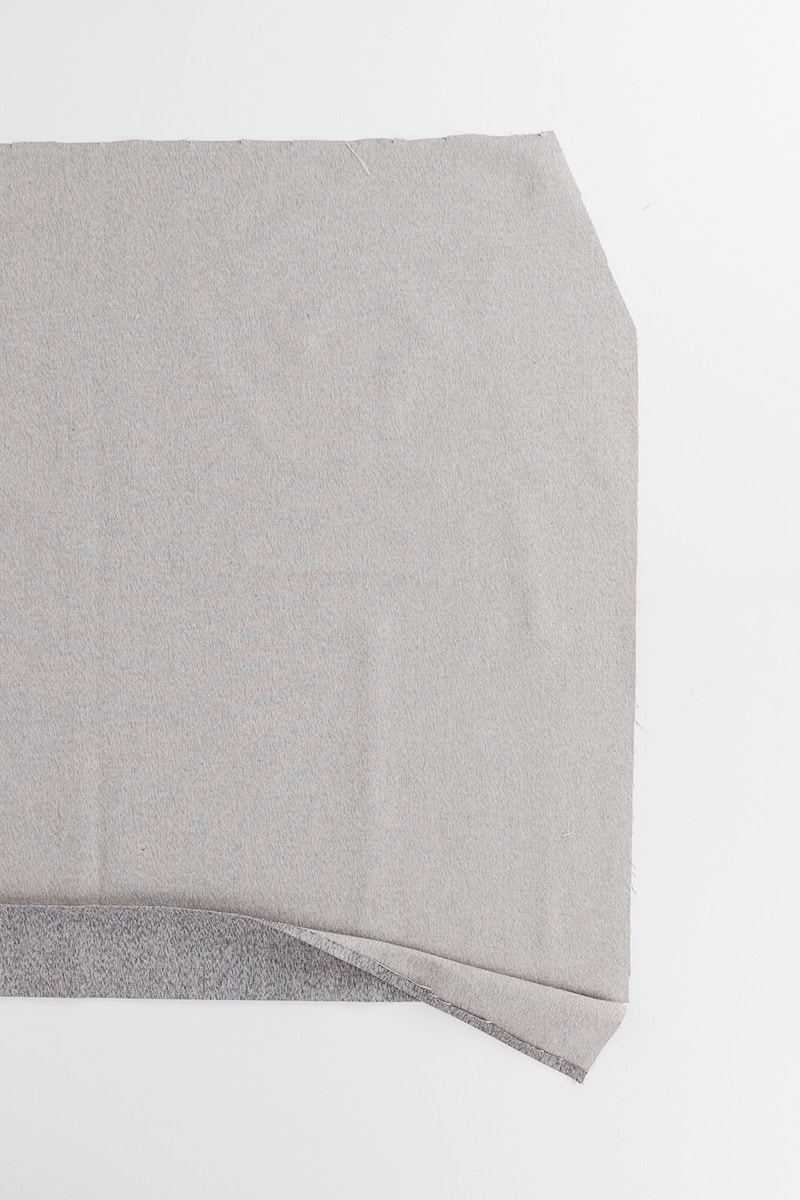
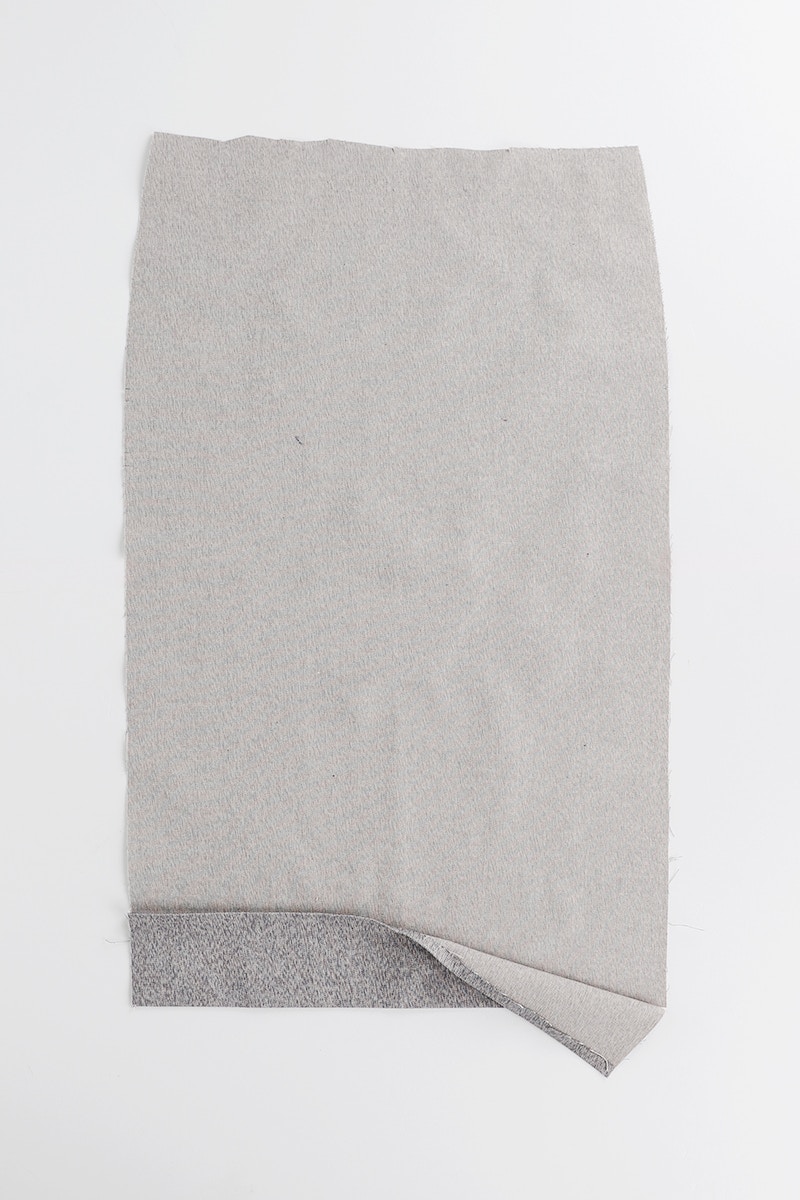
We recommend that you use an iron to press some areas of your pieces before you begin sewing. This will help to ensure accuracy as you sew and aid in giving your August Skirt a neat and tidy finish.
Start by taking your front and back pieces and pressing the hem seam allowance up 1cm towards the wrong side as indicated by the notch. Next fold the hem up a further 8cm, in line with the notches, and press again. Your finished hem depth will measure 8cm.
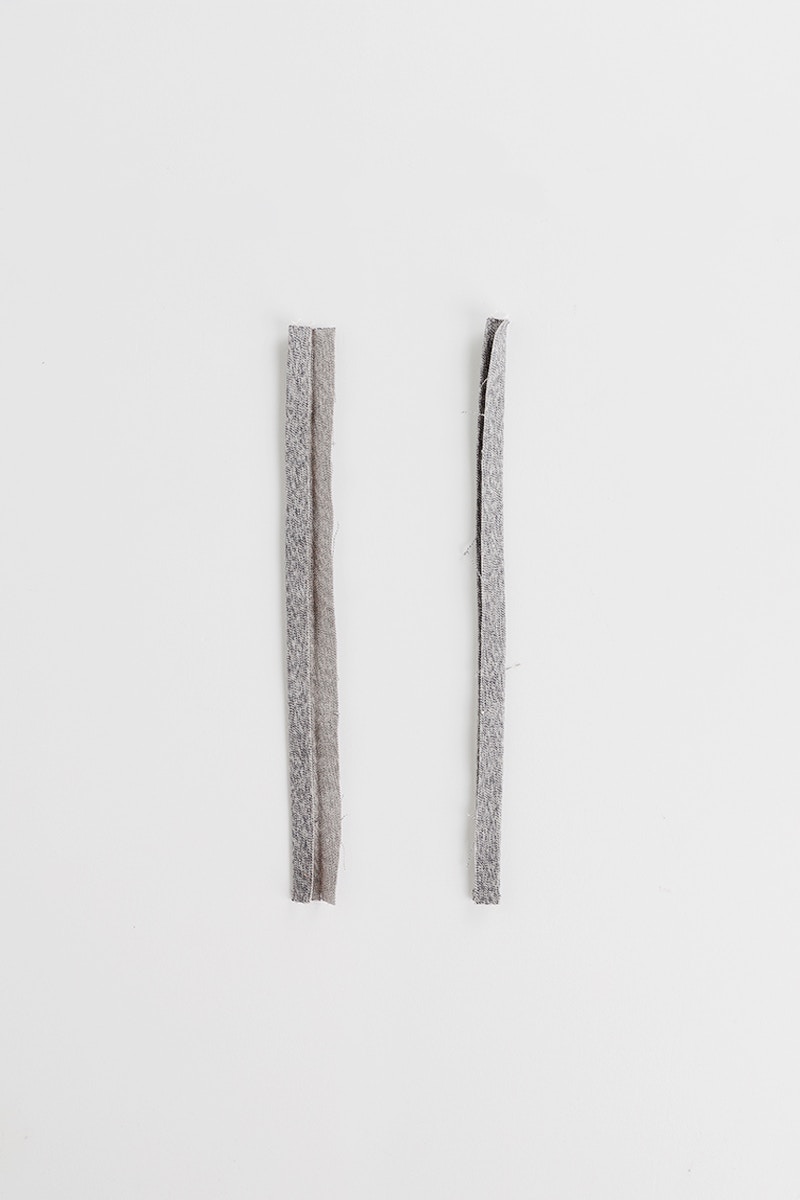
Fold your belt loop pieces into thirds lengthwise as indicated by the notches with right side out. Your finished belt loop pieces will measure 1.4cm wide.
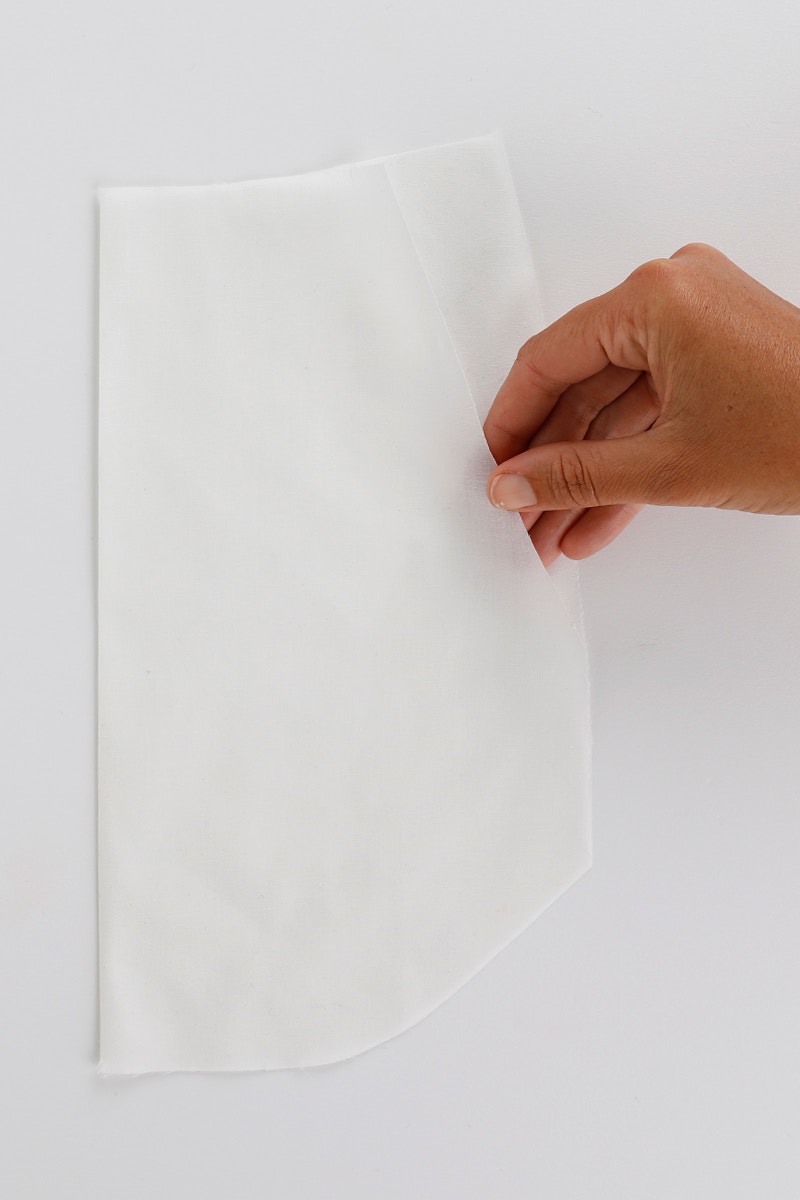
Press your side pocket bags in half at the centre notches, right sides together.

Press your zip guard in half lengthwise with the wrong sides together.
2 — Constructing the Backs
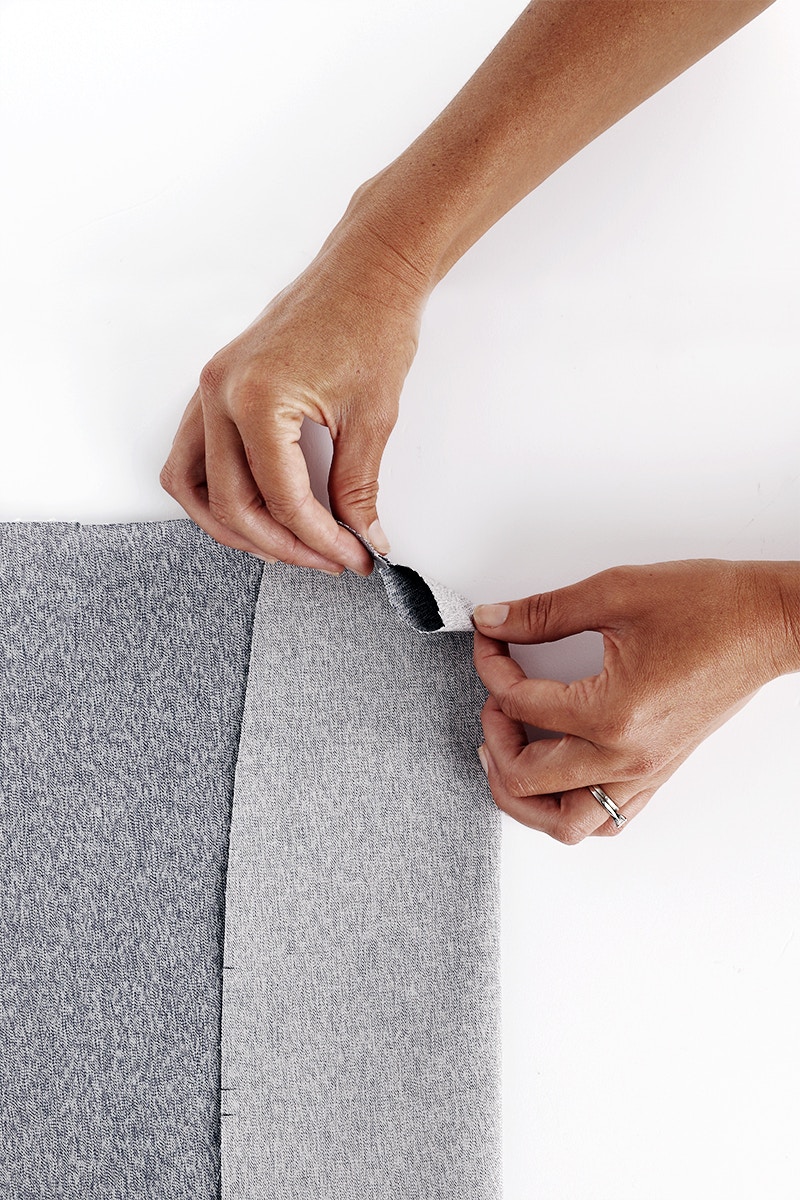
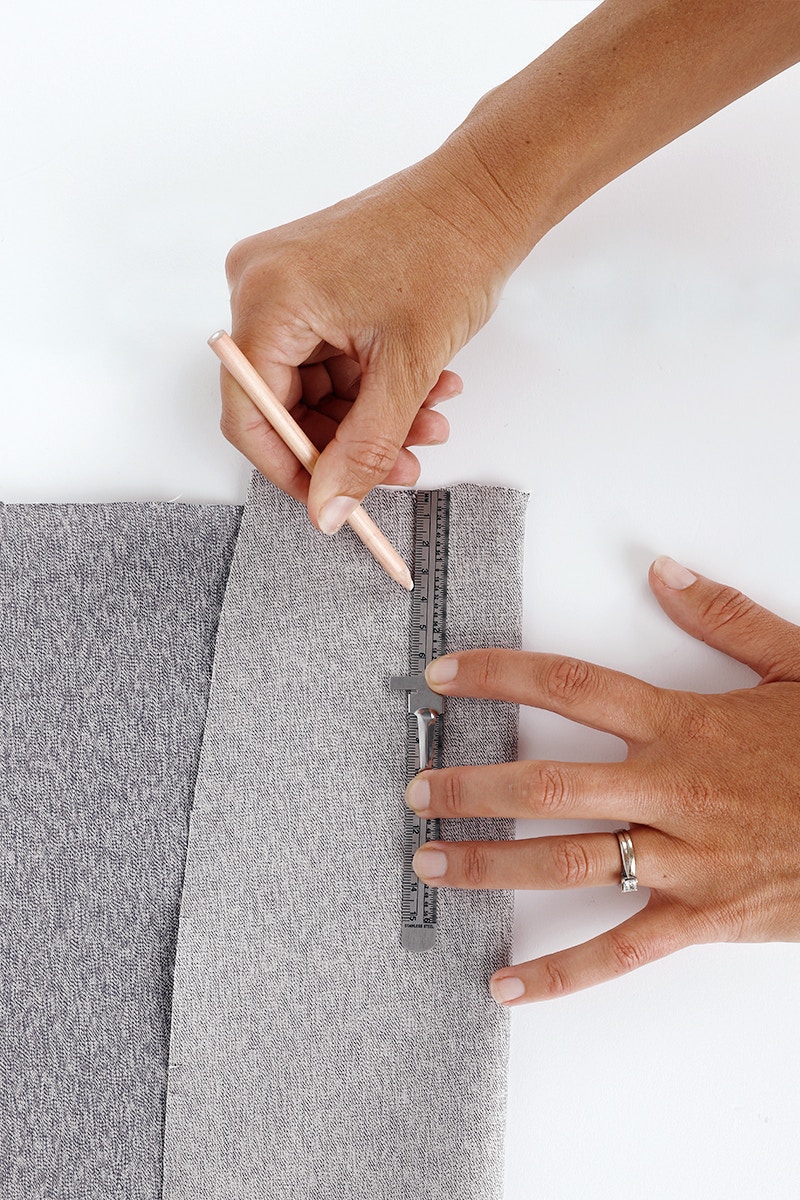
It’s easiest to create your pleats by working from the centre back, out to the side seam. Take a back piece and have it right side up in front of you. Working with the 3 notches closest to centre back, match the two outer notches with the right sides together. Next you will sew the pleat down 3.5cm from the waist edge. You may find it helpful to mark your stitching line on with tailor's chalk or fabric pen before you sew.
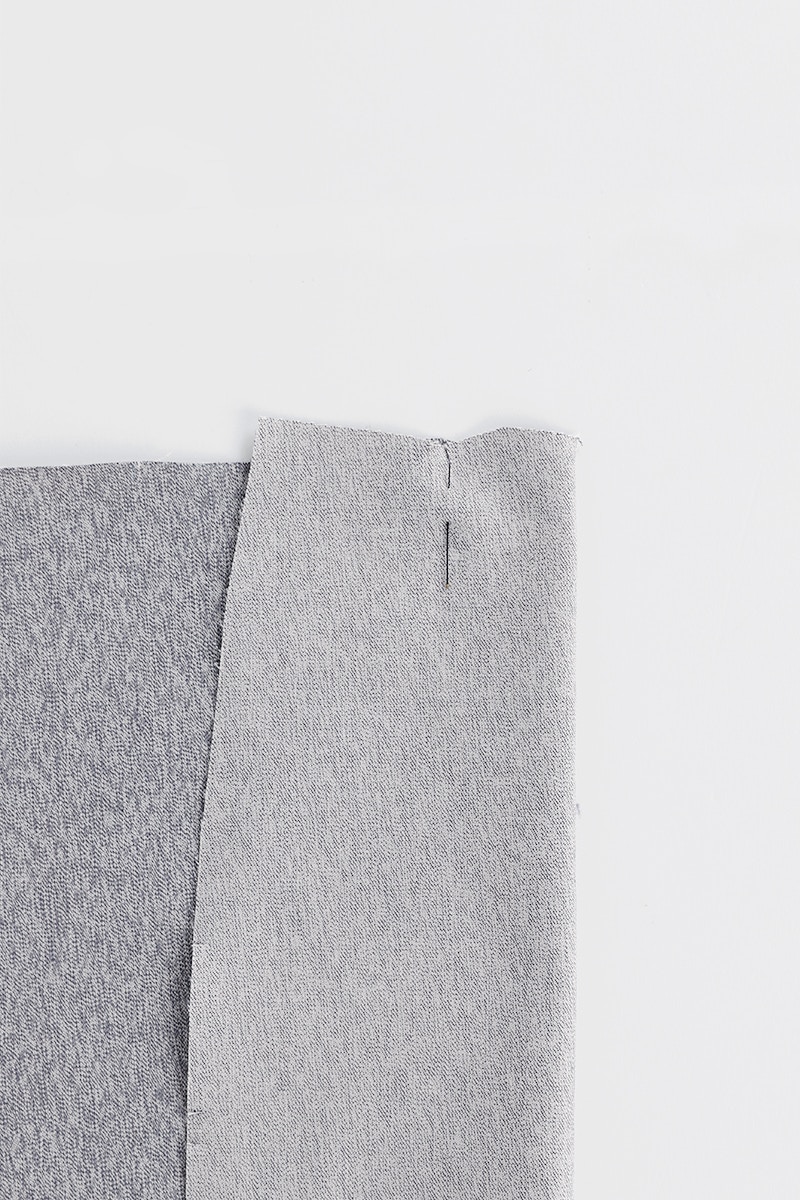
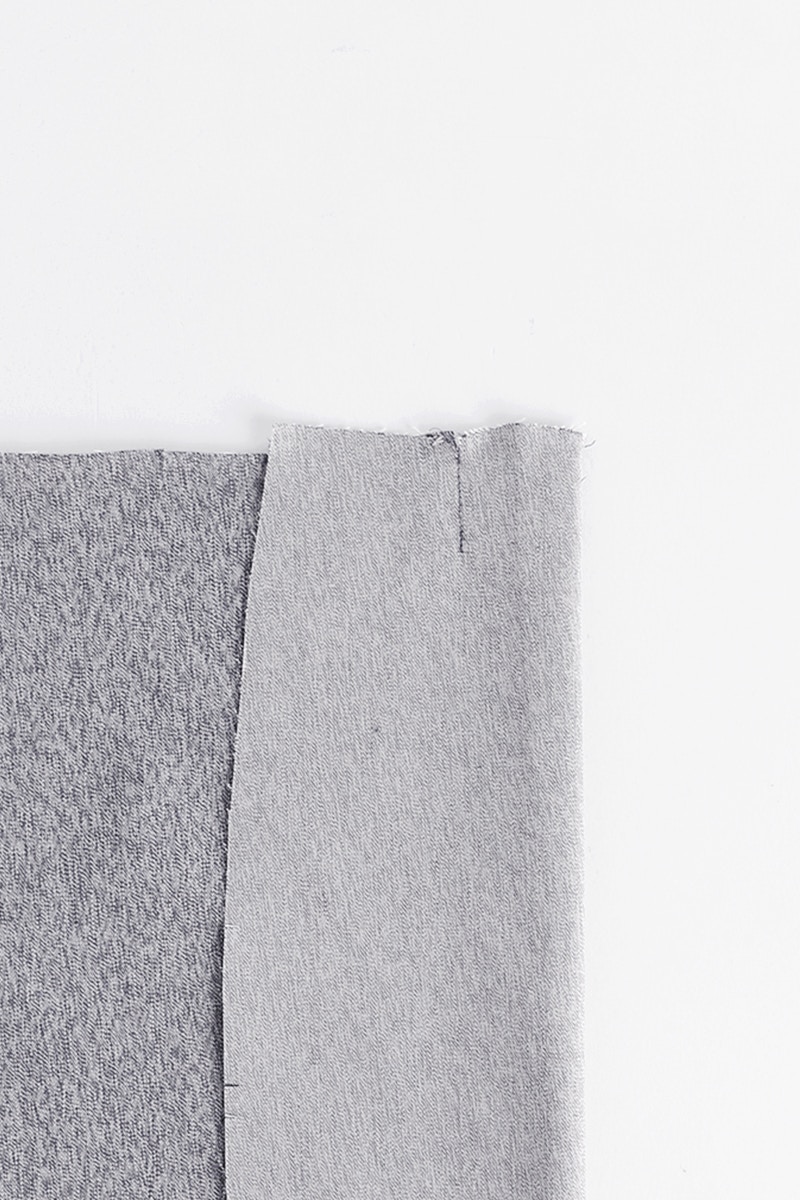
Now pin in your pleat in place, then sew from the notch down 3.5cm on the wrong side.
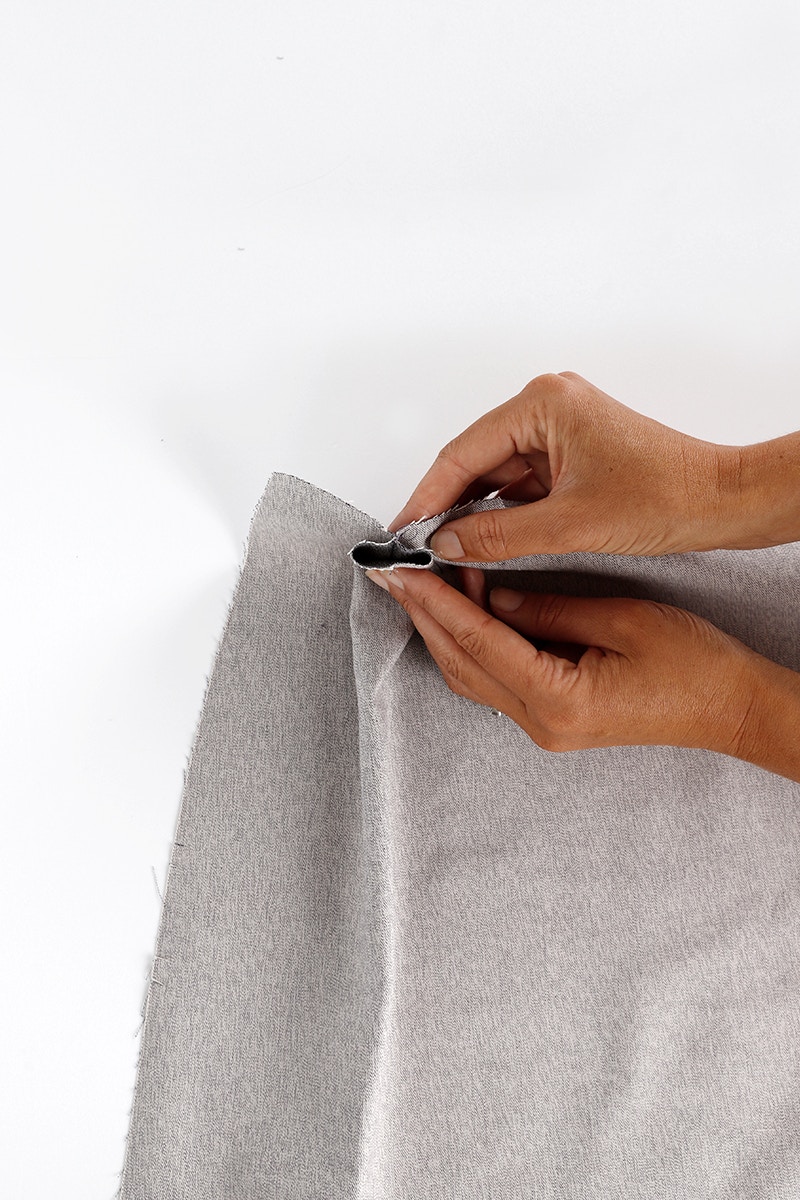

Bring the centre notch and pleat seam together then press flat to create an inverted pleat. Baste your pleat in place at the waist edge.


Now, working towards the side seam, bring the next two notches together. Mark on your stitching line, running 3.5cm from the waist seam.

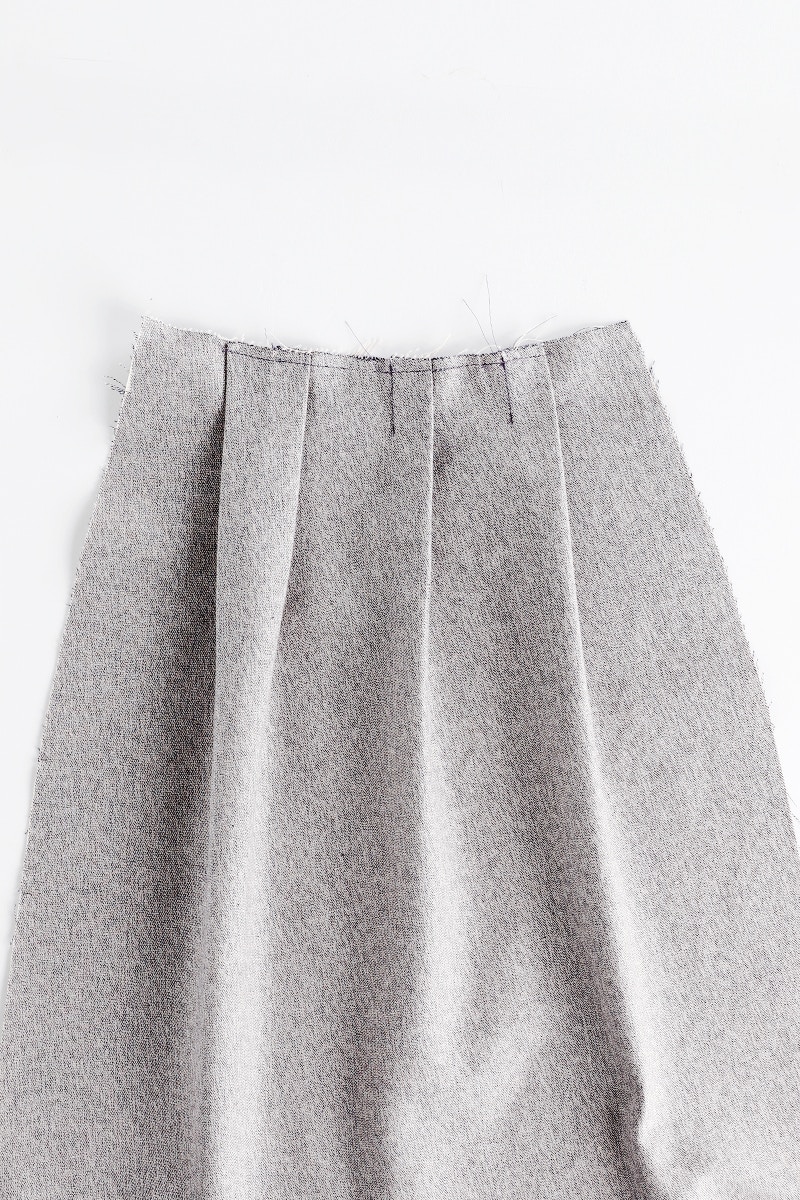
Pin and then sew your pleat 3.5cm down from the notch. Create a total of 2 pleats in this way. Baste these pleats in place at the waist edge so they open towards the centre back and the pleat excess is towards the side seam.
Give your pleats a gentle press and repeat for the other side.

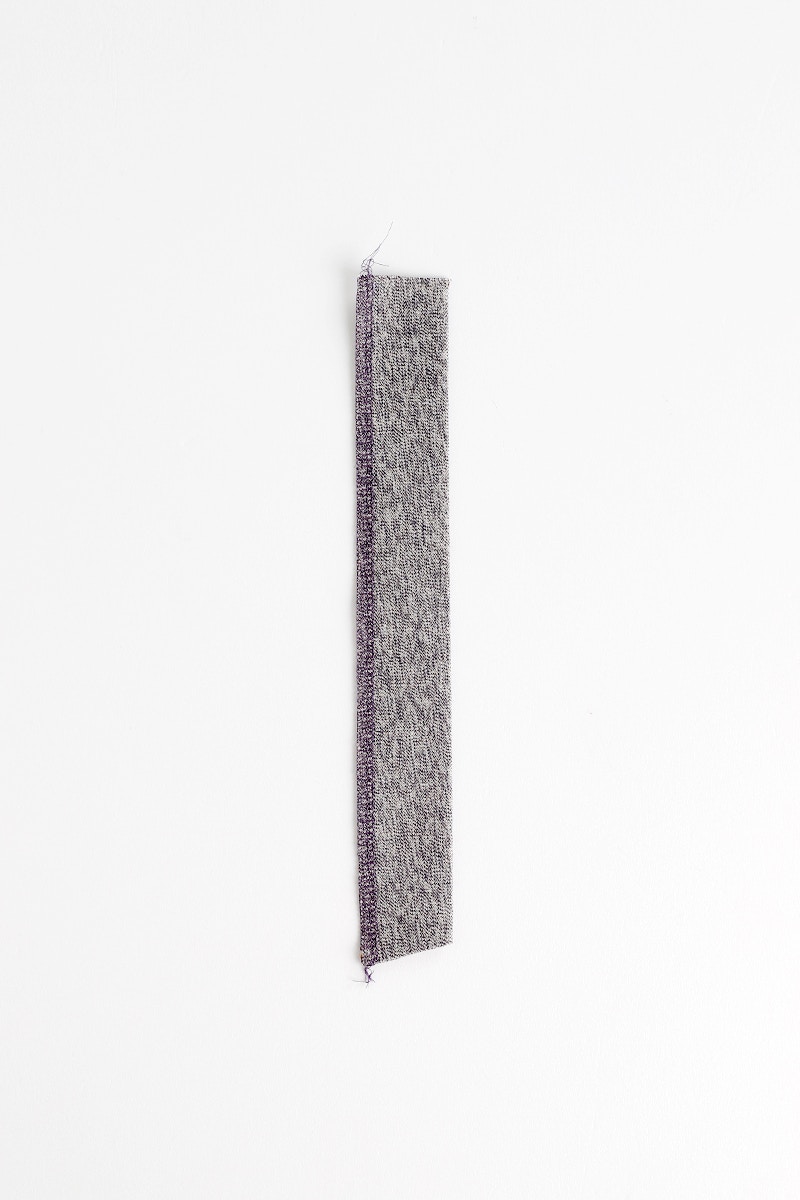
It is now time to insert the zip.
Start by sewing the zip guard. Fold it in half lengthwise with the right sides together, then sew the lower, angled edge with a 6mm seam. Turn it out with the help of a point turner and give it a press. Neaten the the long, raw edges of the zip guard together.
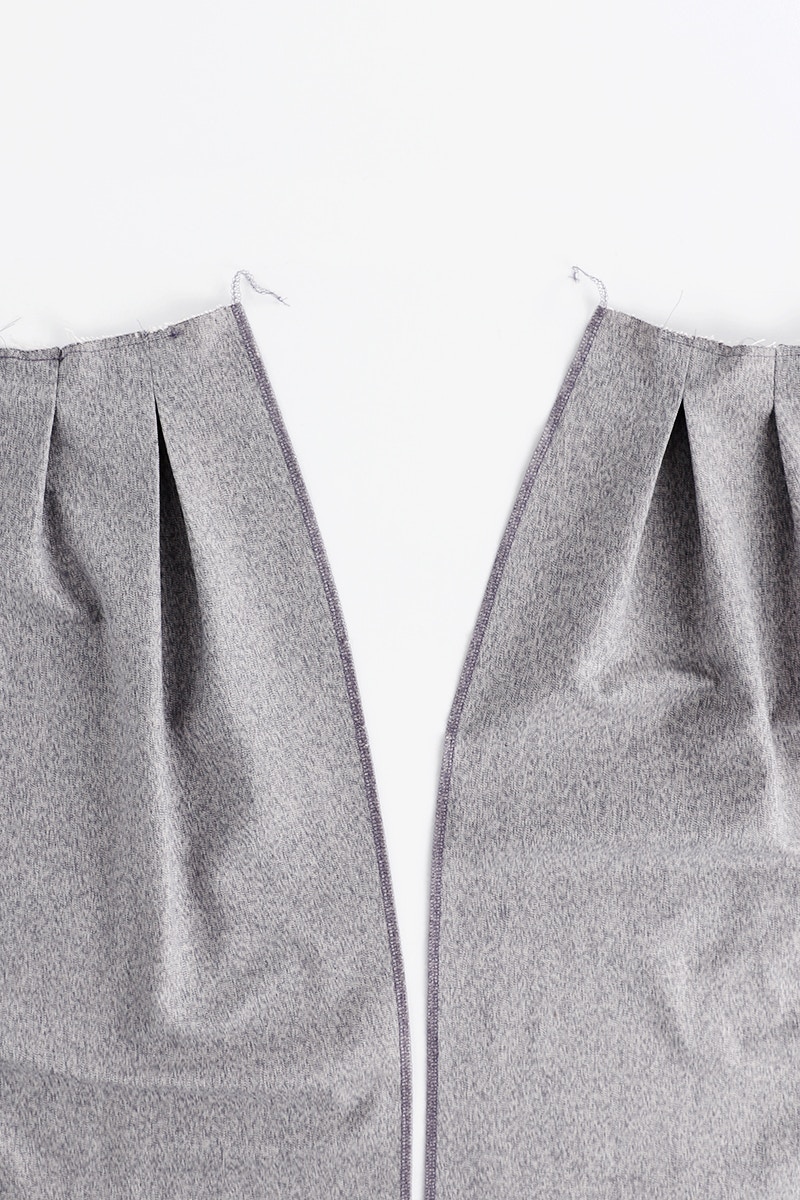
Next, neaten the centre back edges of your back skirt pieces separately.
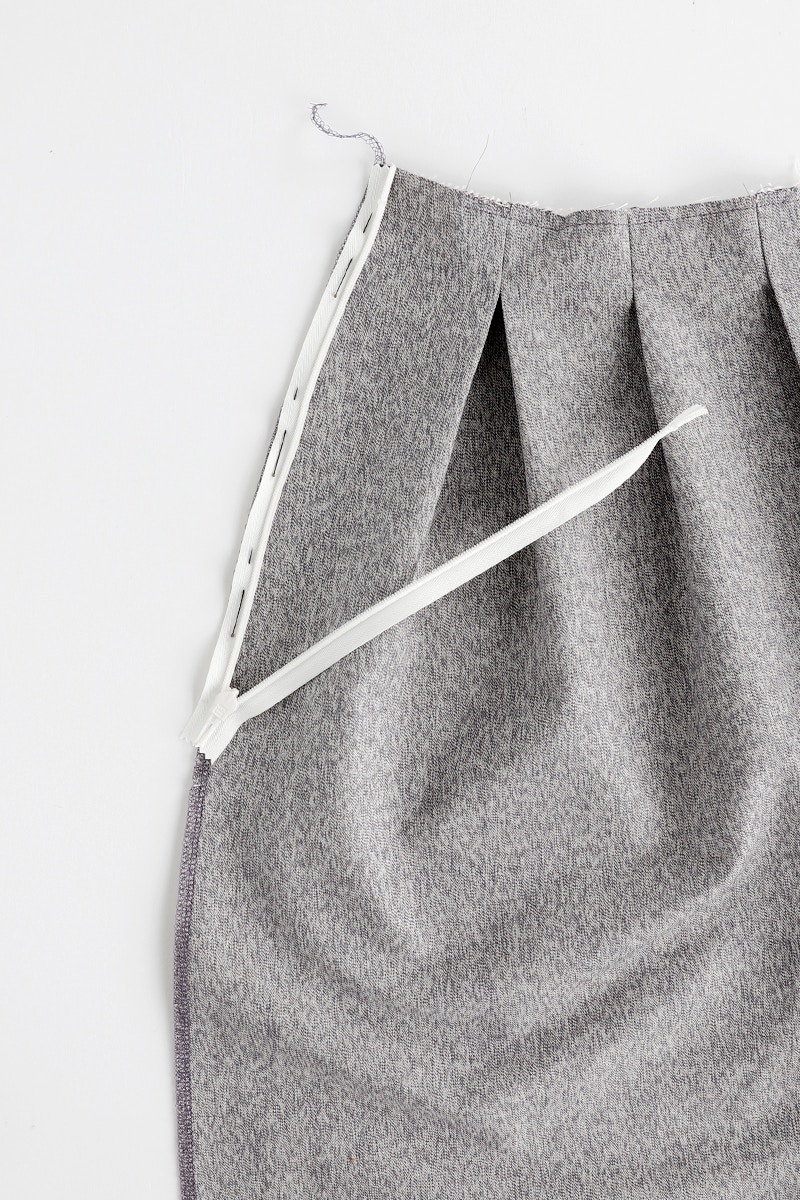
Now lay a back piece in front of you, right side up. Then pin in place the open zip, face down, aligning the edge of the zip tape with the centre back edge of the skirt.
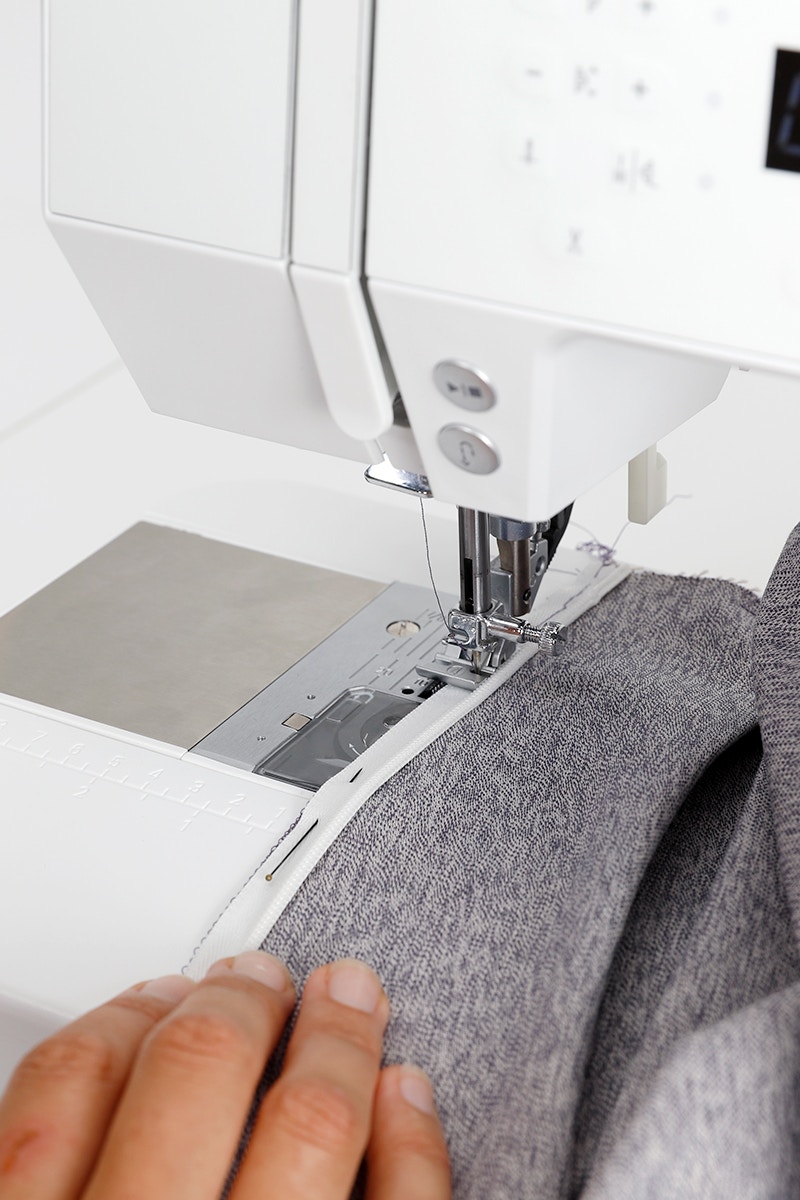
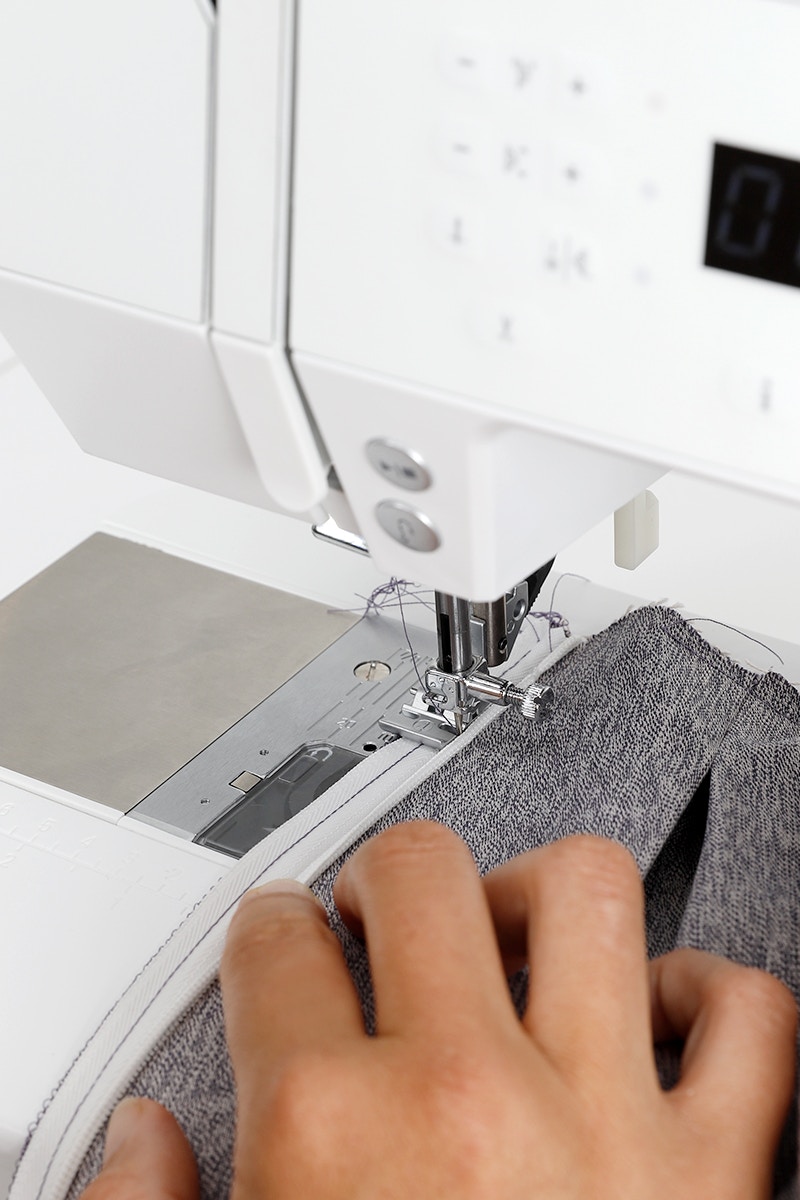
If you have an invisible zip foot you can use it now to sew the first side of your zip.
If you don't have have an invisible foot, don't worry! You can use a regular zip foot to insert your invisible zip as we have done. First, sew a line of basting stitches down the centre of the zip tape. Then using your fingers, roll out the zip teeth and place your needle close to the teeth. Depending on your machine this might be done by moving the needle to it's furthest position, or else physically moving your skirt so the needle sits close to the teeth. Sew a second line of stitching as close to the teeth as you can get without sewing on them! Take it slowly, rolling the zip teeth out as you sew.
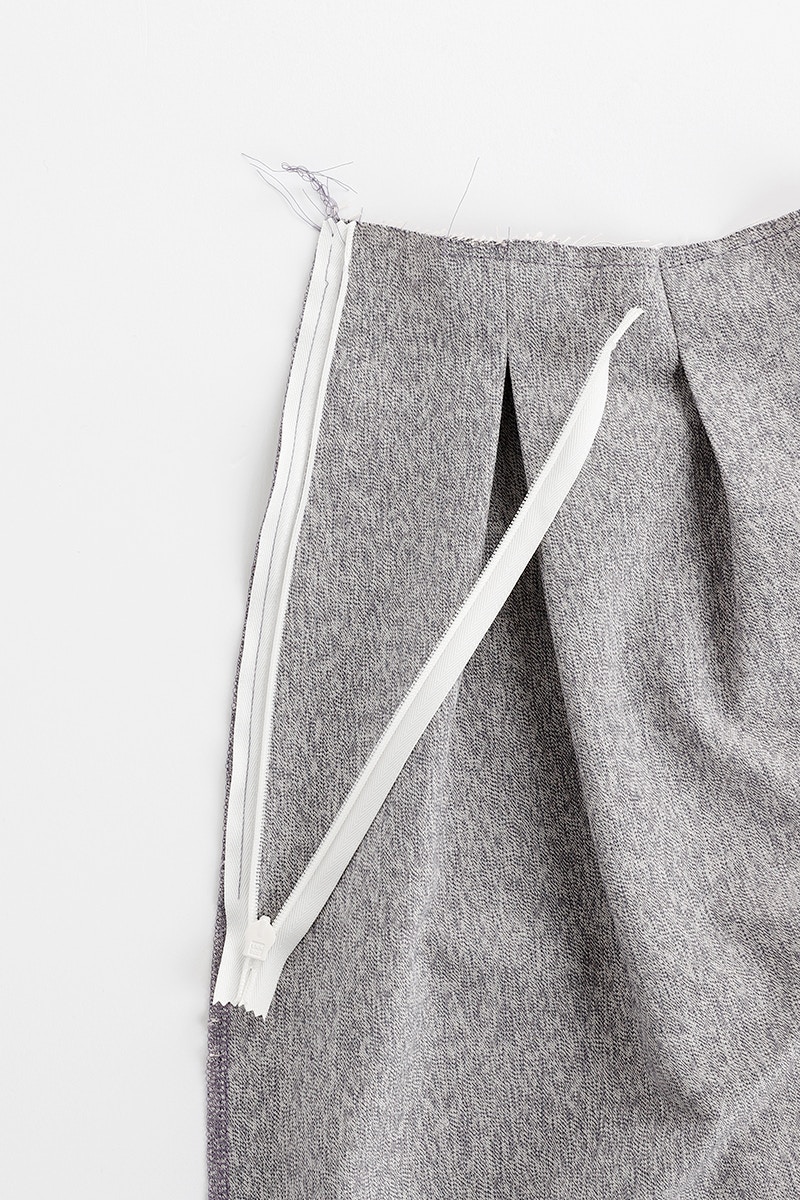
You now have one side of your zip sewn.


Now, pin the zip tape to the other centre back. Take your time to make sure your zip isn’t twisted. Sew the second side of your zip as you did with the first.
Don't forget to move your needle back to the centre position before continuing on!
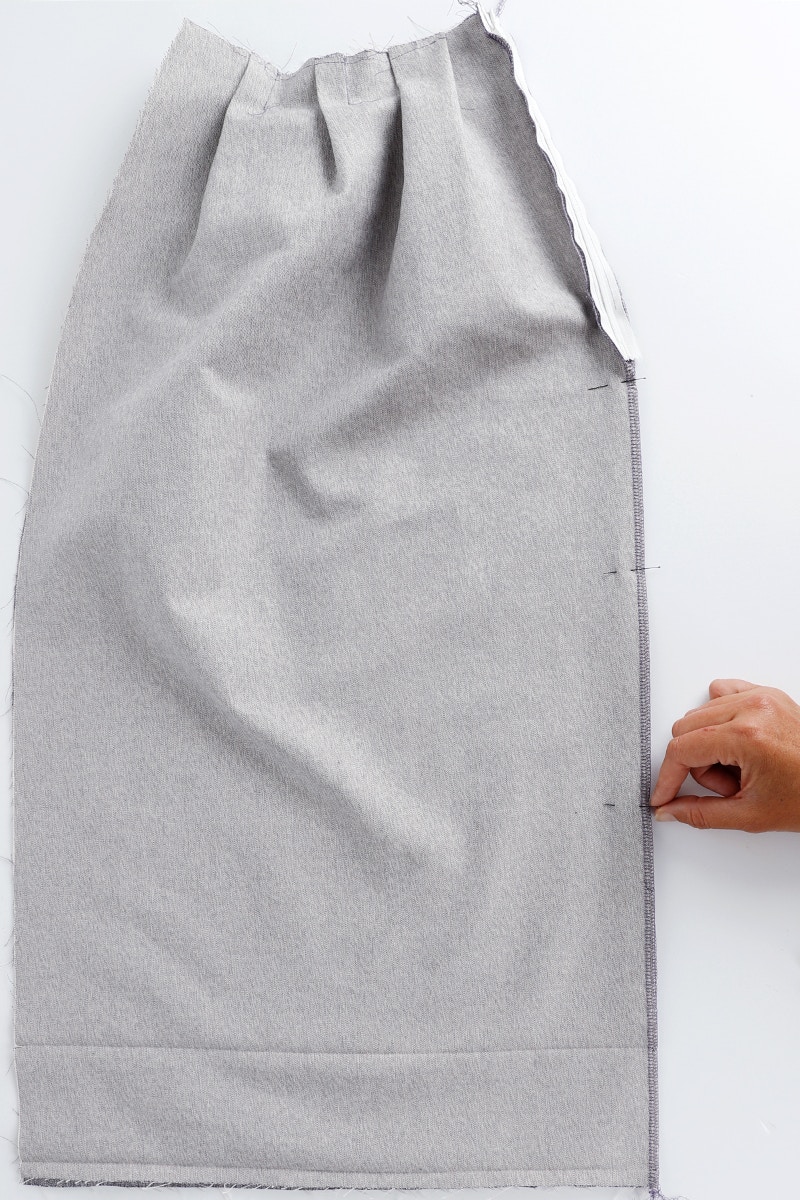
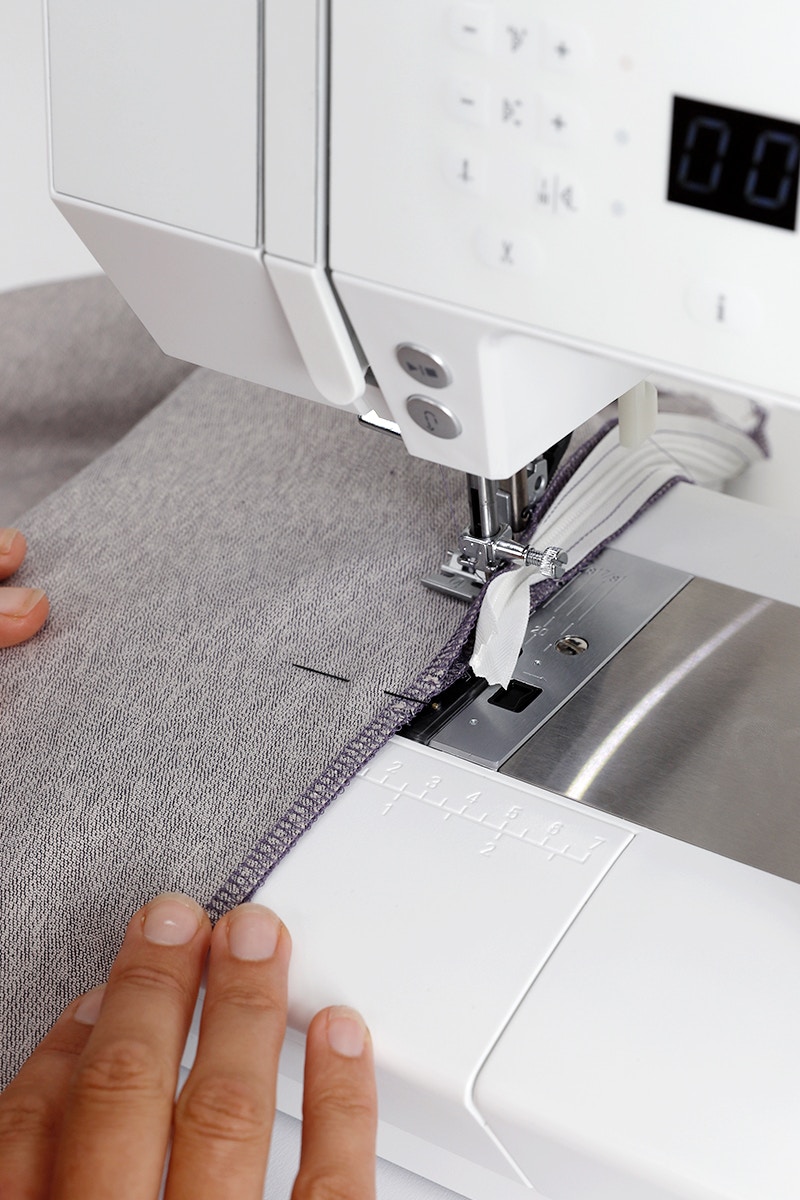
Now it is time to close up your centre back seam. Close your zip and pin the remainder of the centre back together. Starting at the base of zip, sew the centre back closed with a 1cm seam. Use a zip foot to get as close as you can to the bottom of the zip when you are sewing this seam. Once you have sewn about 5cm, you may want to switch back to a regular presser foot to sew the remainder of the seam as it will give you more even pressure on the fabric, and therefore easier to get a tidier result.

Give your zip and centre back a press, pressing the seam open.
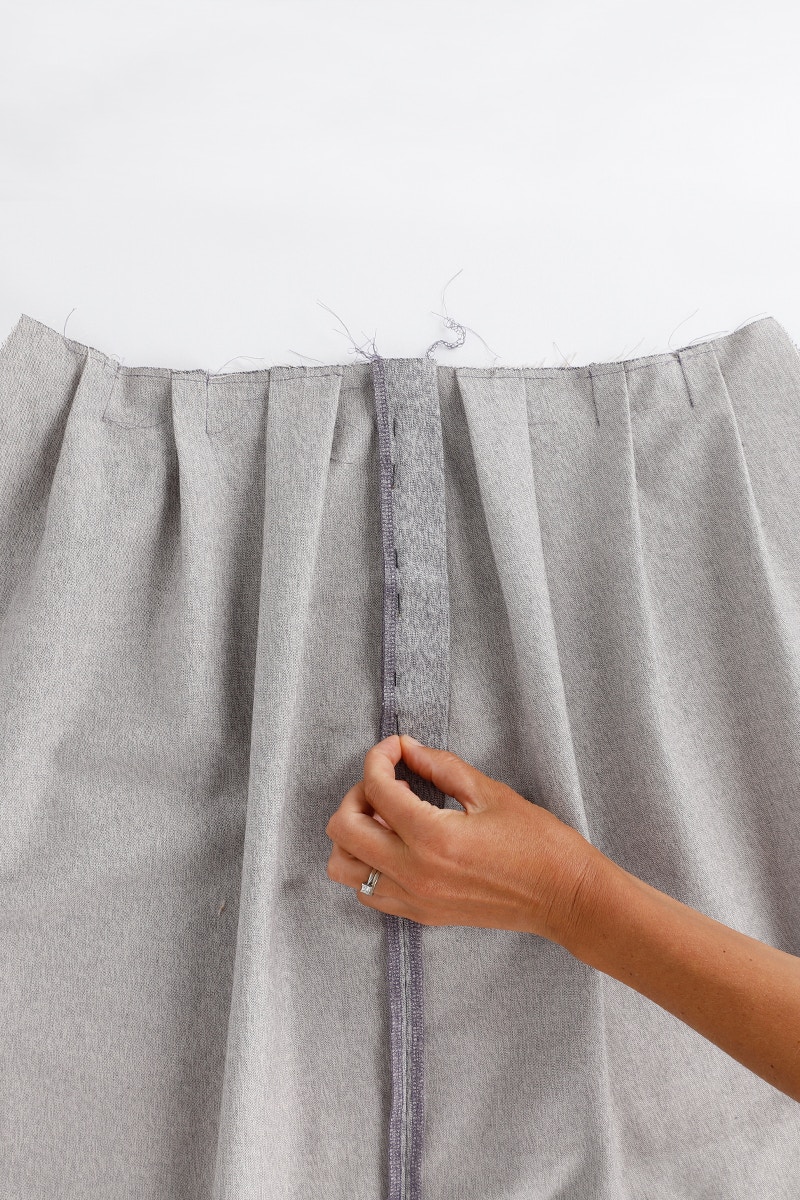
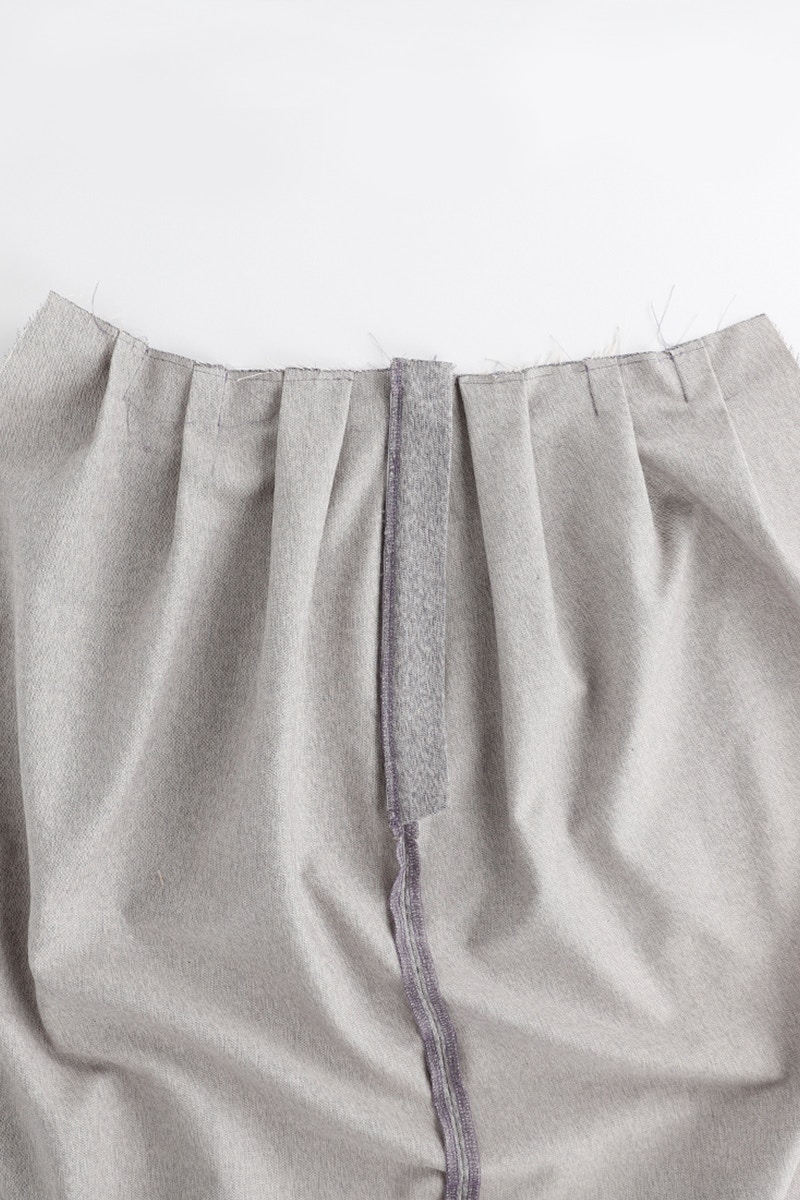
The last step in this post is to attach to zip guard. Align the raw edge of the zip guard to the waist, and the neatened edges at centre back on the right hand side of the skirt (as worn). Sew the fly guard to the seam allowance only at centre back. You may find it helpful to use a zip foot, or to move your needle to one side when attaching your fly guard.
3 — Constructing the Front

Now it is time to sew your front. It is easiest to create your pleats by working from the centre front, out to the side seam. Find your centre front notch by folding the front piece in half.


Now locate the three notches to one side of centre front. Bring the outer two of these notches together, right sides together, to create the pleat. Mark your stitching line on with tailor's chalk or fabric pen, running 3.5cm down from the waist edge.

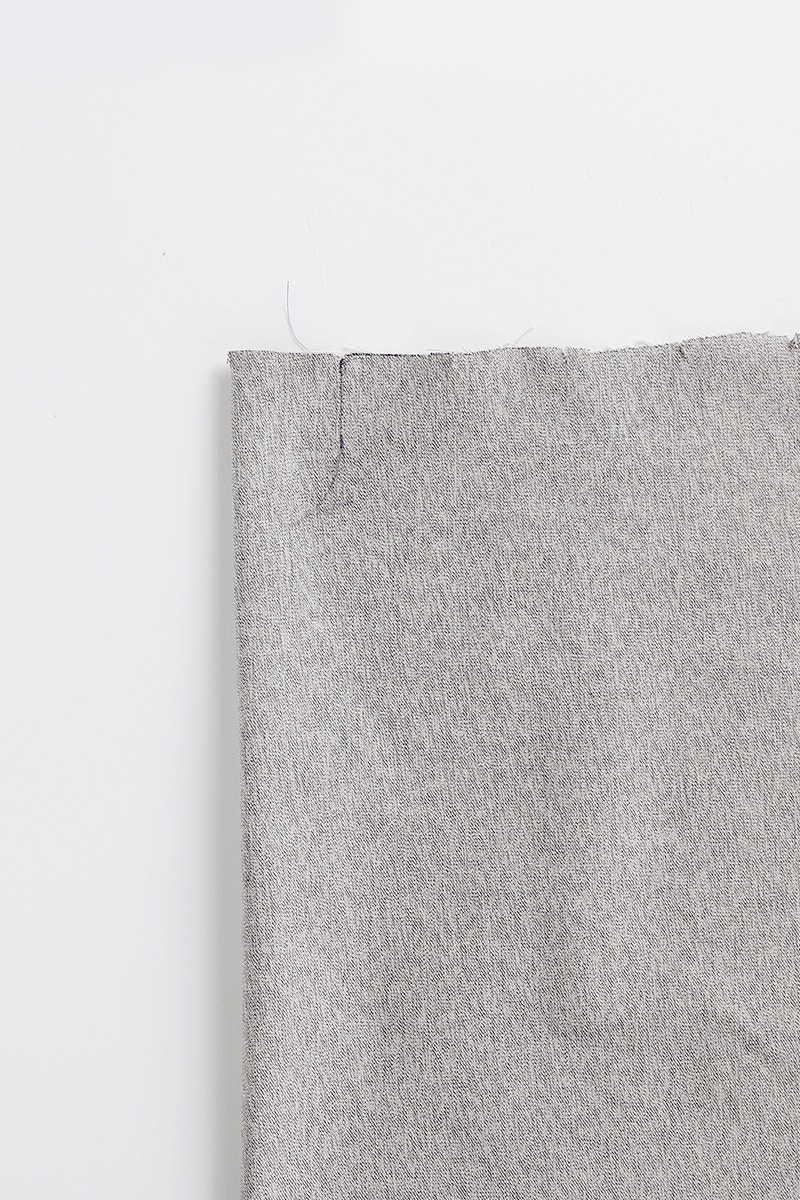
Pin the pleat in place, then sew from the notch down 3.5cm following the line you just marked.
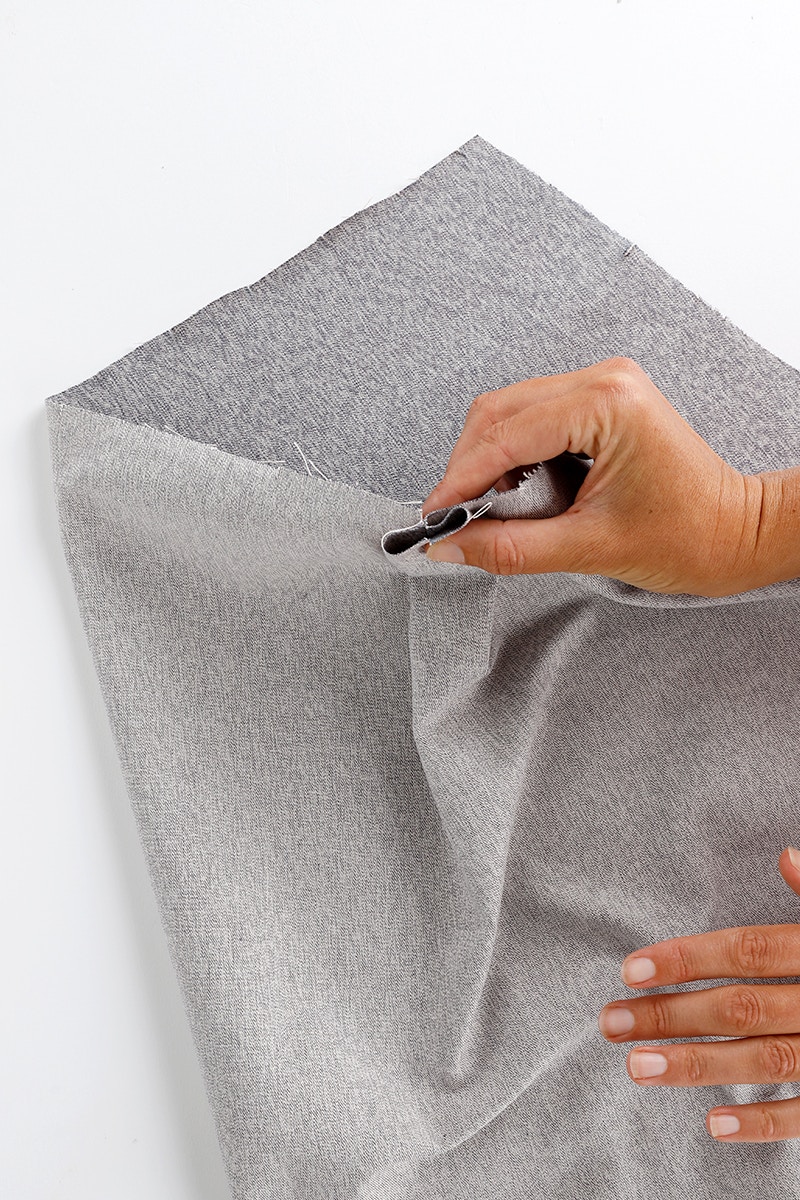
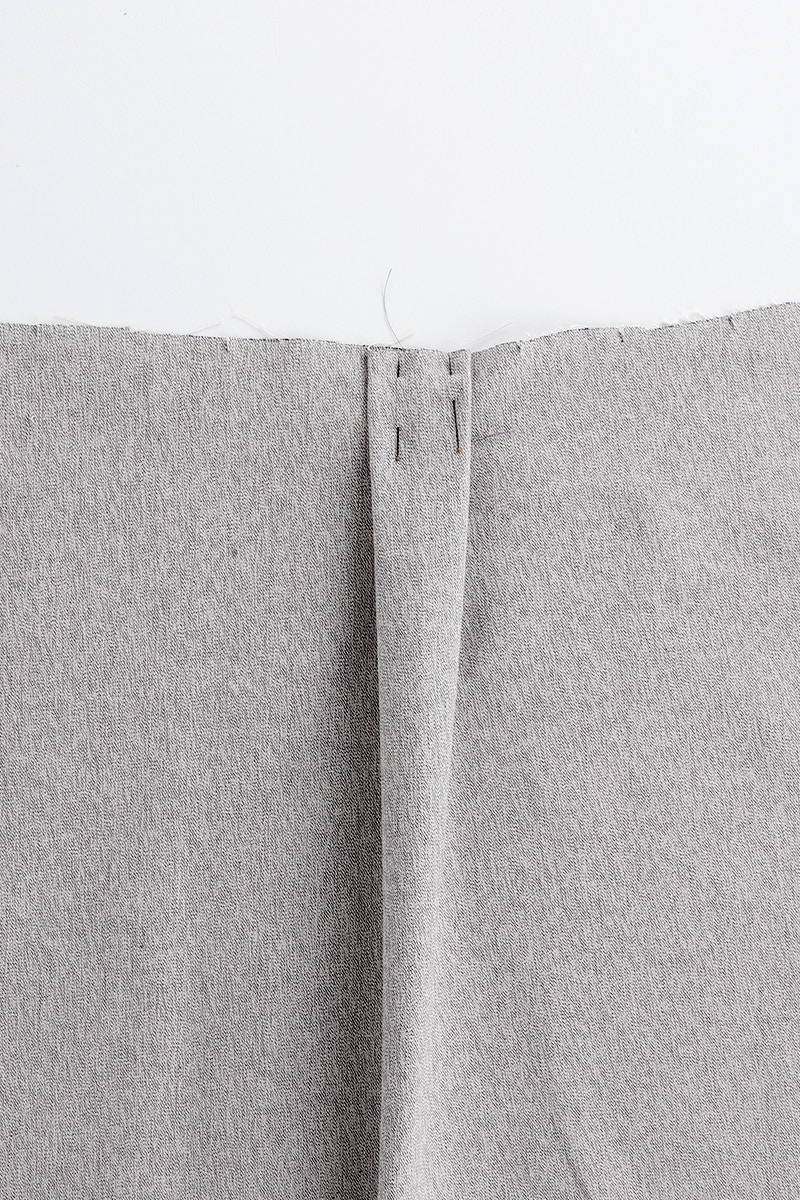
Bring the centre pleat notch and pleat seam together. Press your pleat flat, pin and then baste it in place at the waist edge.
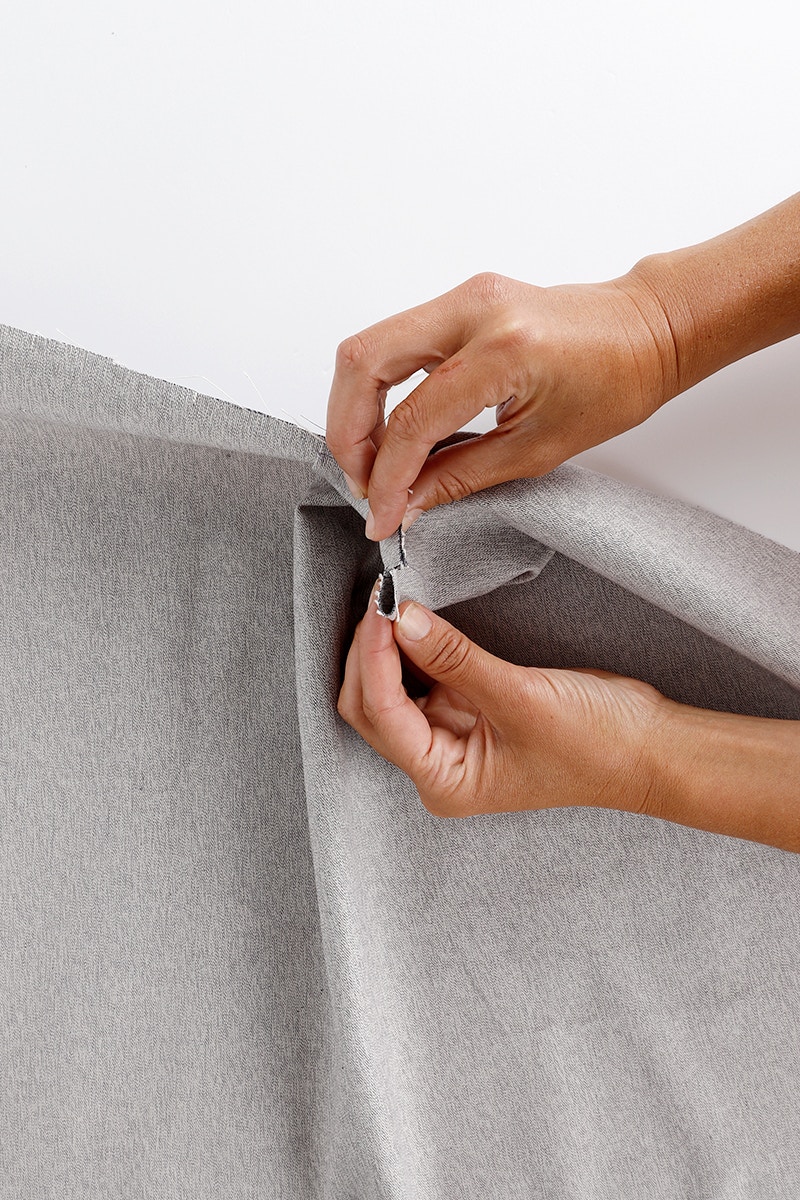

Now, working towards the side seam, bring the next two notches together. Mark on your stitching line, running 3.5cm from the waist seam.
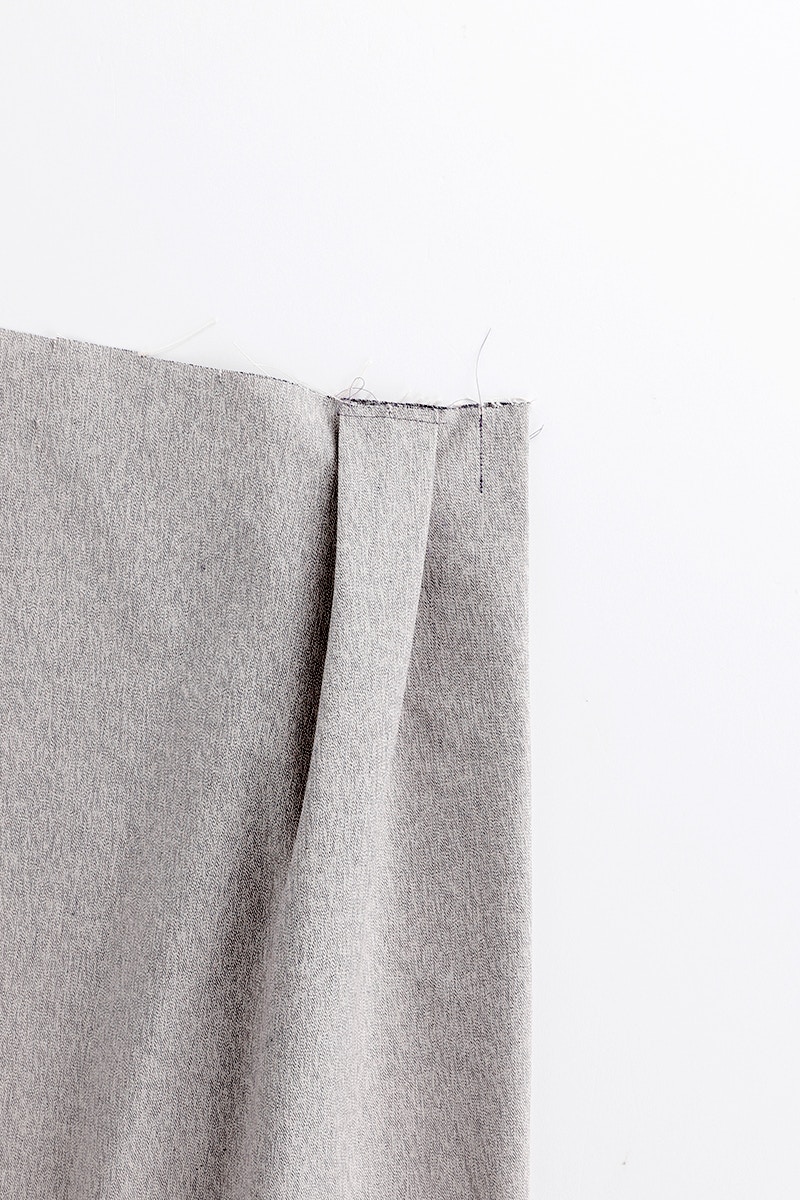
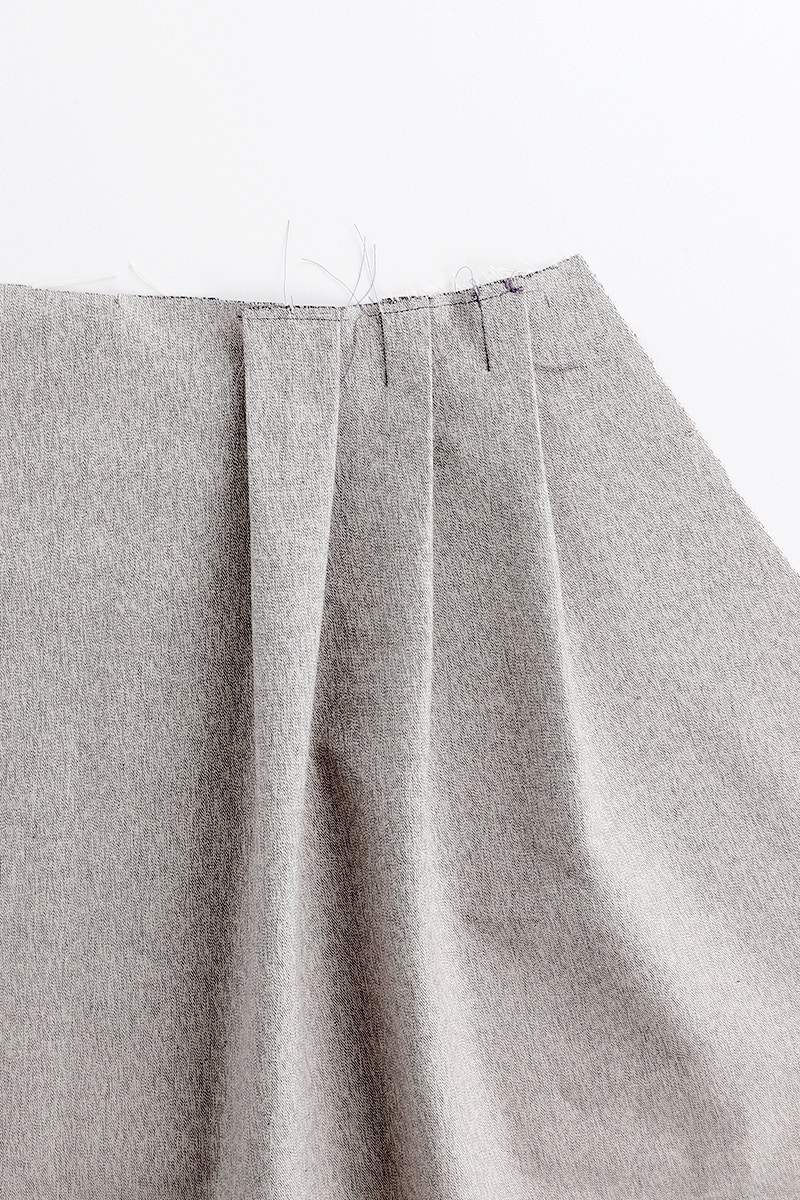
Pin and then sew your pleat 3.5cm down from the waist notches. Create a total of two pleats in this way. Baste these pleats in place at the waist edge so they open towards the centre front and the pleat excess is towards the side seam.
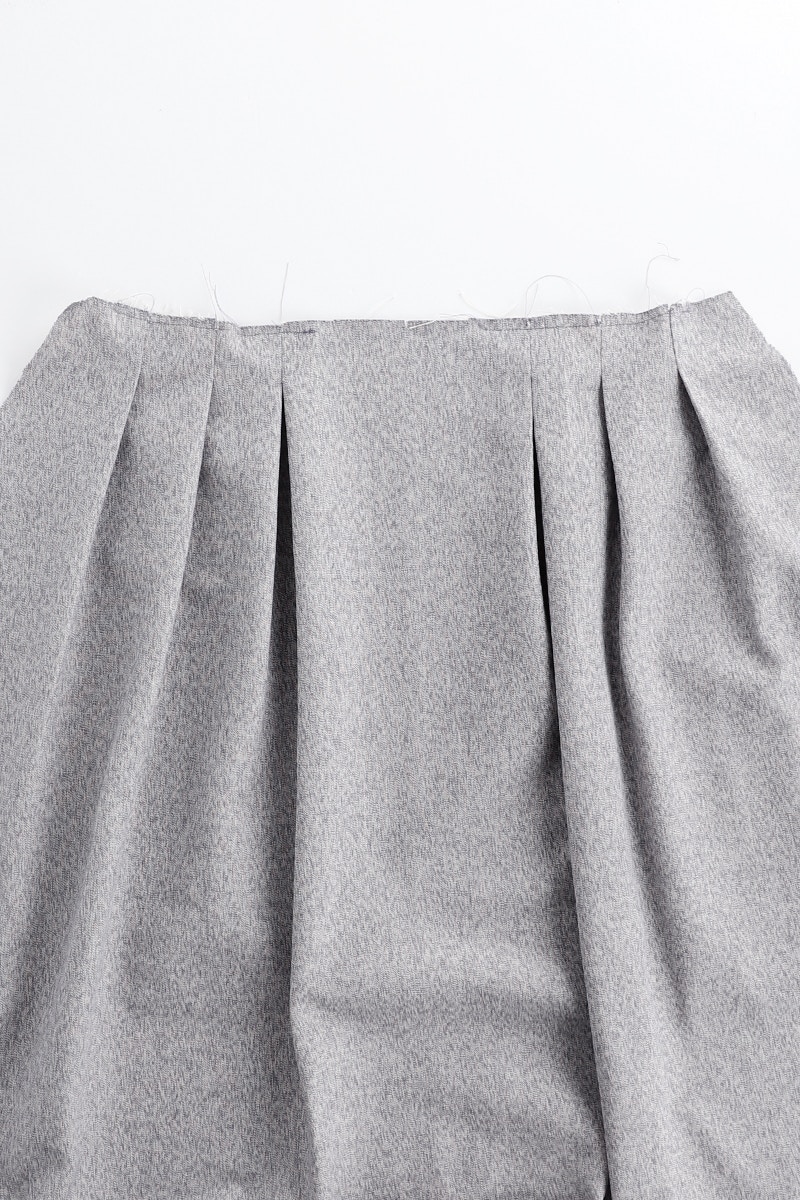
Sew your pleats for the other side in the same way and then give them a gentle press.
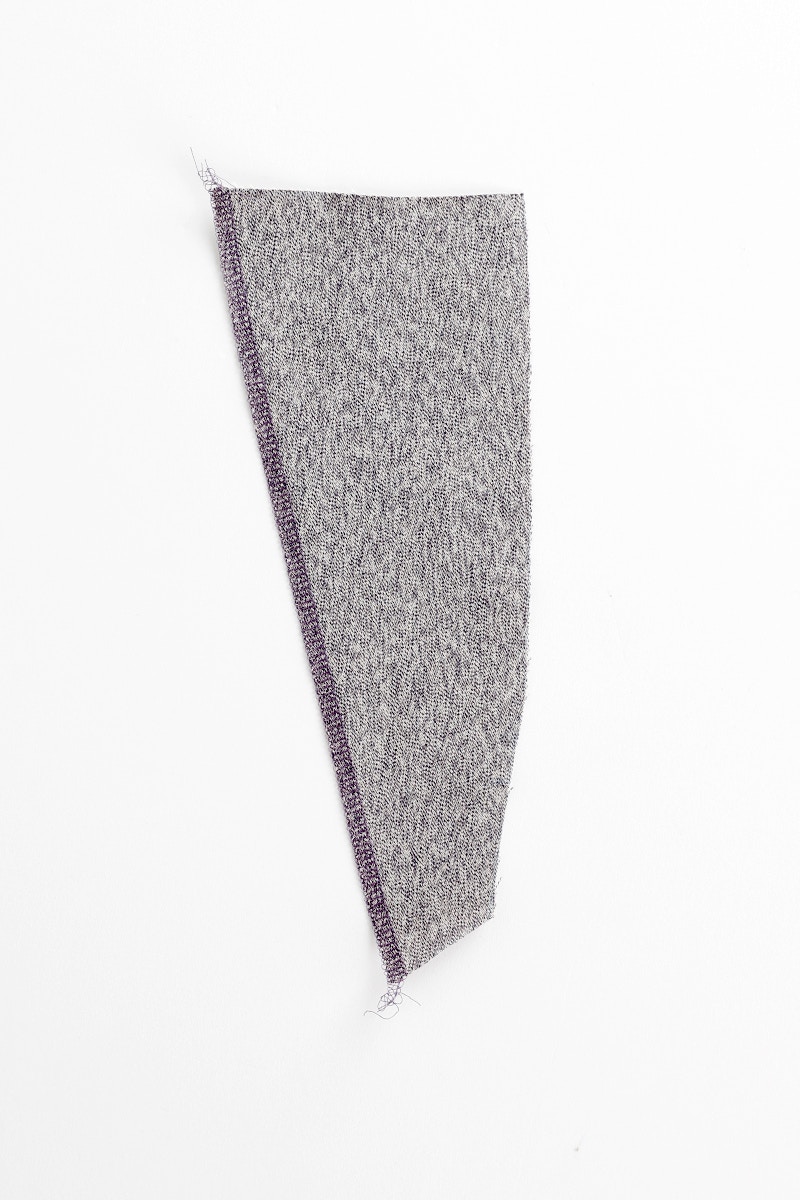

Next we move on to the side pockets. Neaten the long, un-notched edge of your pocket bearer piece. Then, place the wrong side of the pocket bearer to the right side of the pocket bag, matching the notches. Edgestitch around the entire pocket bearer piece to hold it in place.


With the right sides together, align the angled edge of your pocket bag piece to the pocket opening on the skirt, right sides together. Pin in place then sew this seam at 1cm.

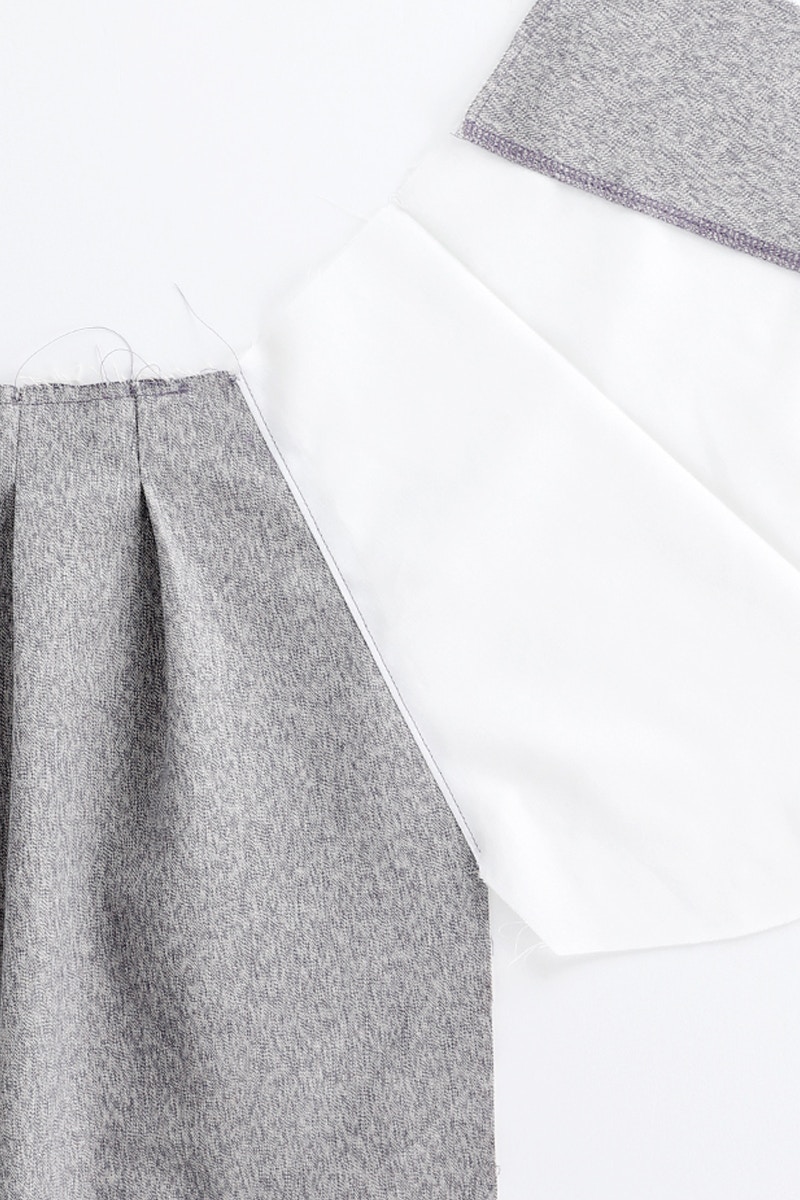
Press the seam allowance towards the pocket bag, then under stitch at 3mm on the pocket bag.
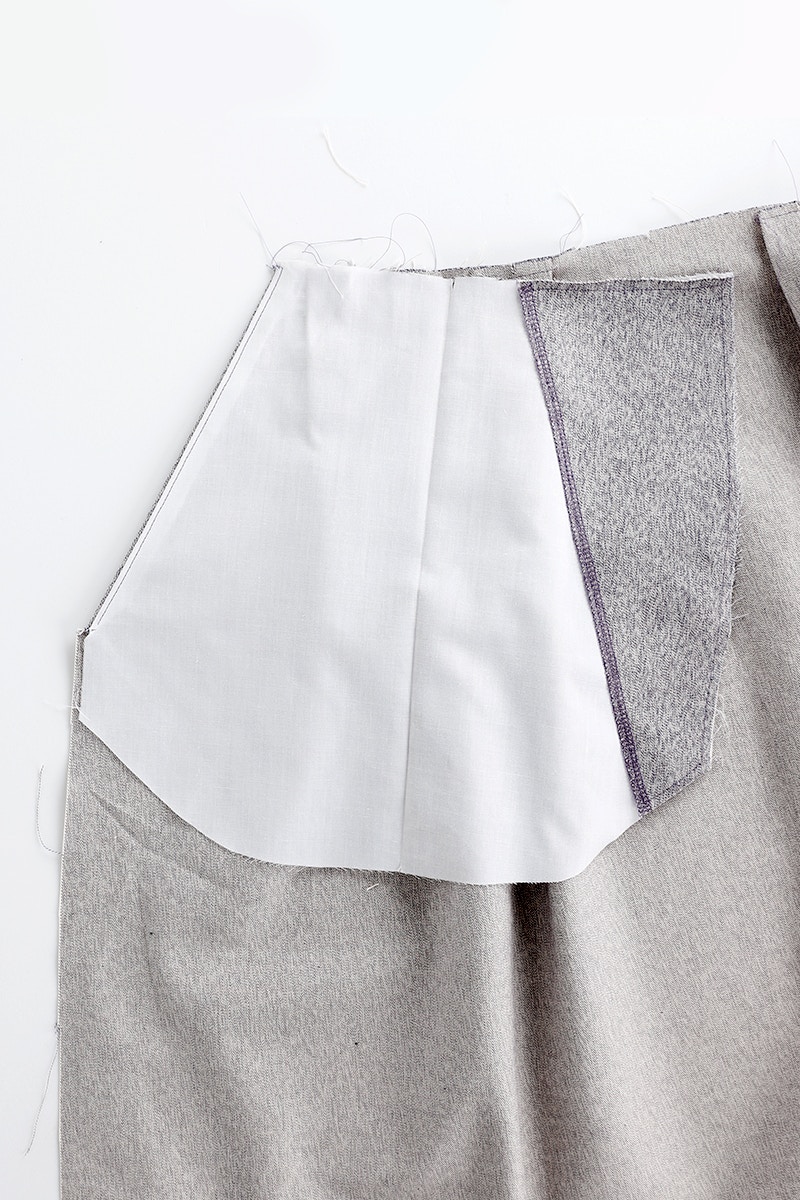
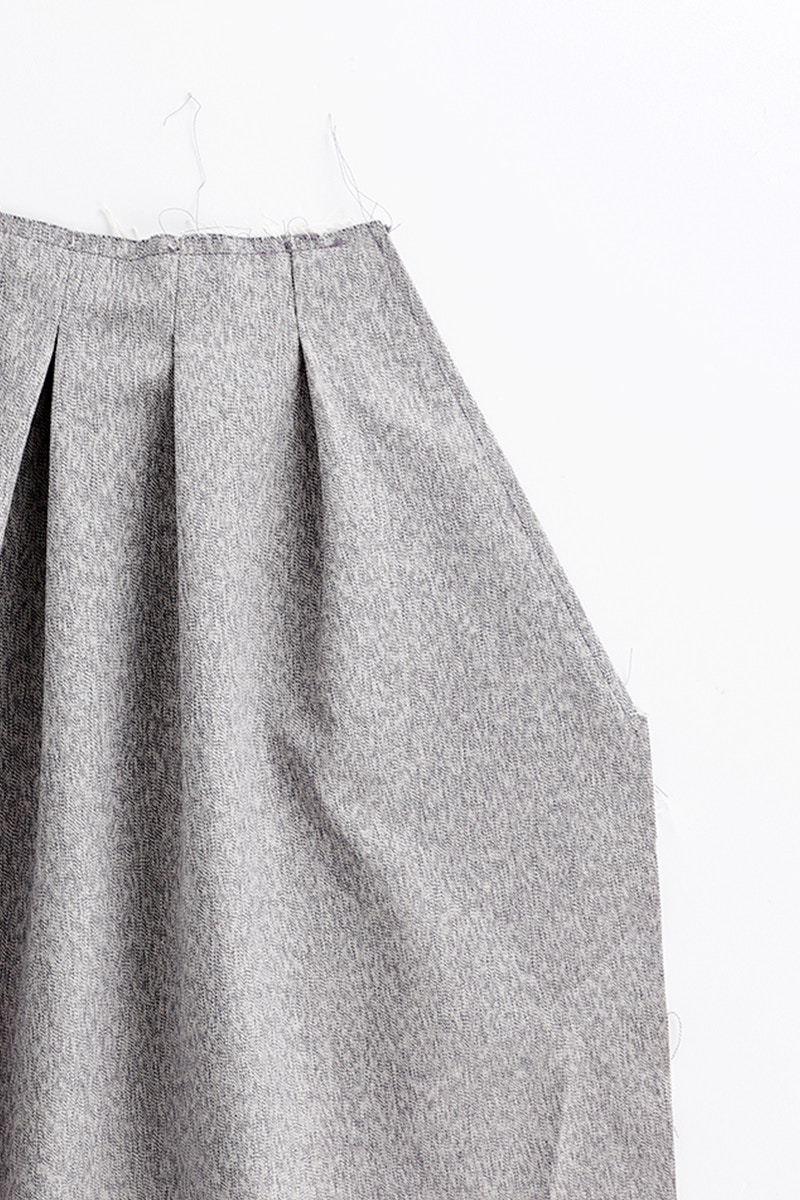
Fold your pocket bag to the inside of your skirt and give it another press. Now, working with the right side facing up, topstitch at 6mm along the pocket opening.
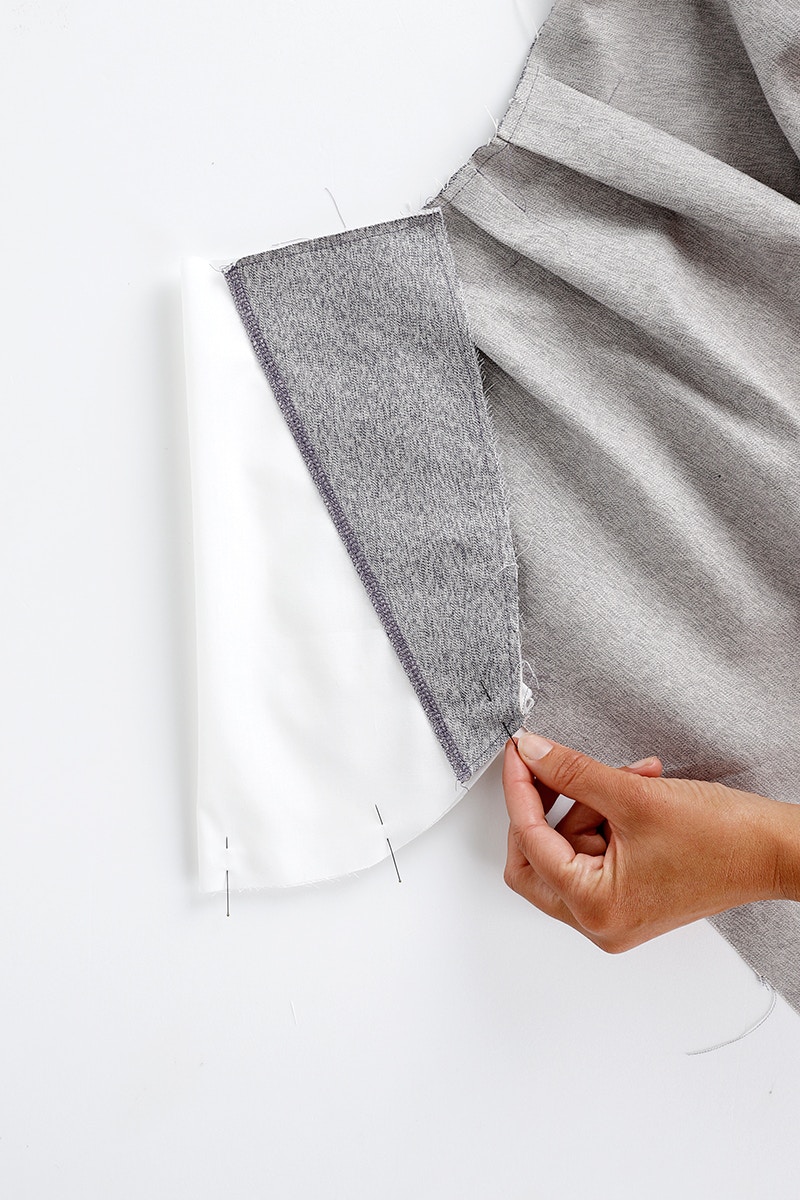
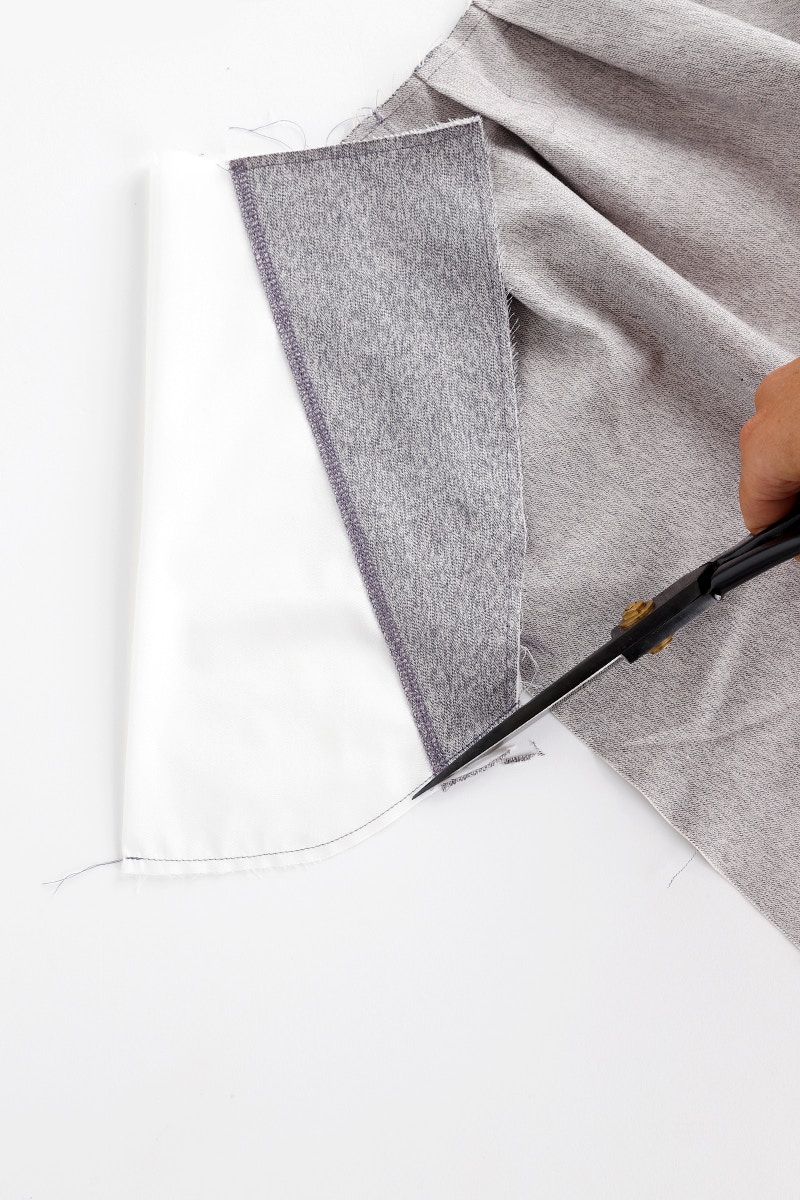
Next, fold your pocket bag in half at the centre with the wrong sides together. This is the opposite to how you pressed this piece at the beginning. Pin the bottom edges of the pocket together then sew with it closed with a 6mm seam. Trim your seam to 3mm, taking care not to cut through your stitching.

Turn your pocket out so the right sides are together. Use a point turner to help you, then press the seam. Sew the bottom edge of the pocket again at 6mm to enclose the seam.
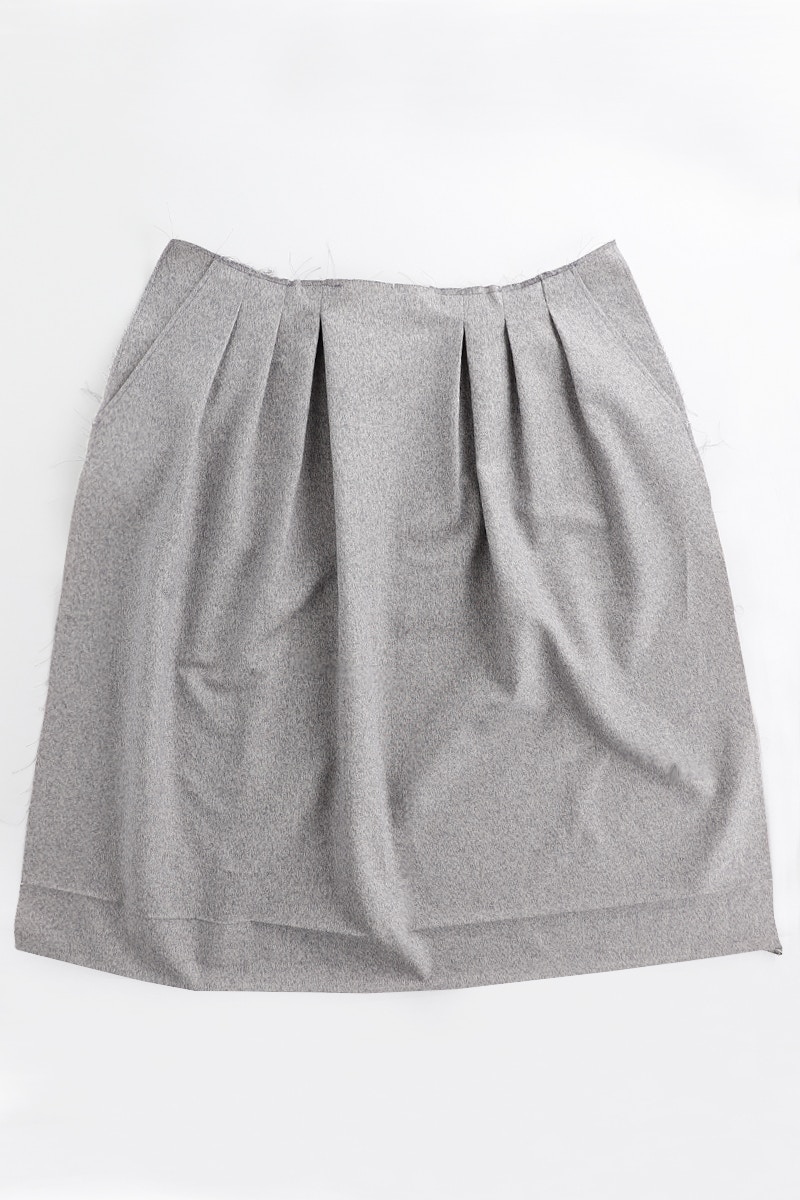
Baste your pocket to the skirt at the waist and side seam then repeat for the other side. Your front is complete!
4 — Waistband and Belt Loops


The first step in constructing the waistband is to finish the bottom edge of the waistband facing with bias binding. Unfold your bias binding and pin the right side of the bias tape to the wrong side of the waistband, aligning the edges. Start at the notch on the left side to the end of the facing on the right side, as worn. Sew the bias binding to the waistband facing by stitching in the crease line closest to the raw edges.


Now press the bias binding away from the facing, then refold and pin it so the raw edge is enclosed. Then, working from the right side, edge stitch the bias binding closed.


With your right sides together, pin the waistband outer to the waistband facing along the top edge. Then sew them together with a 1cm seam.

Press the seam towards the facing and then under stitch on the waistband facing.
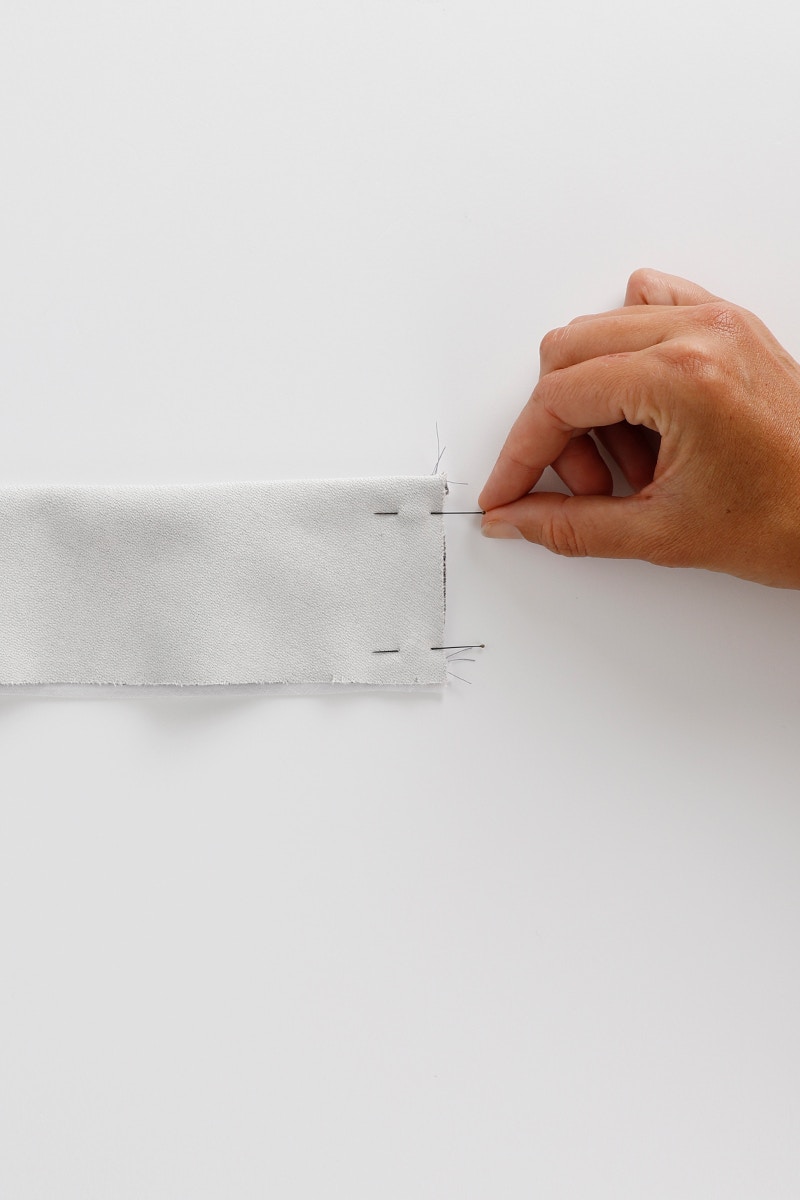
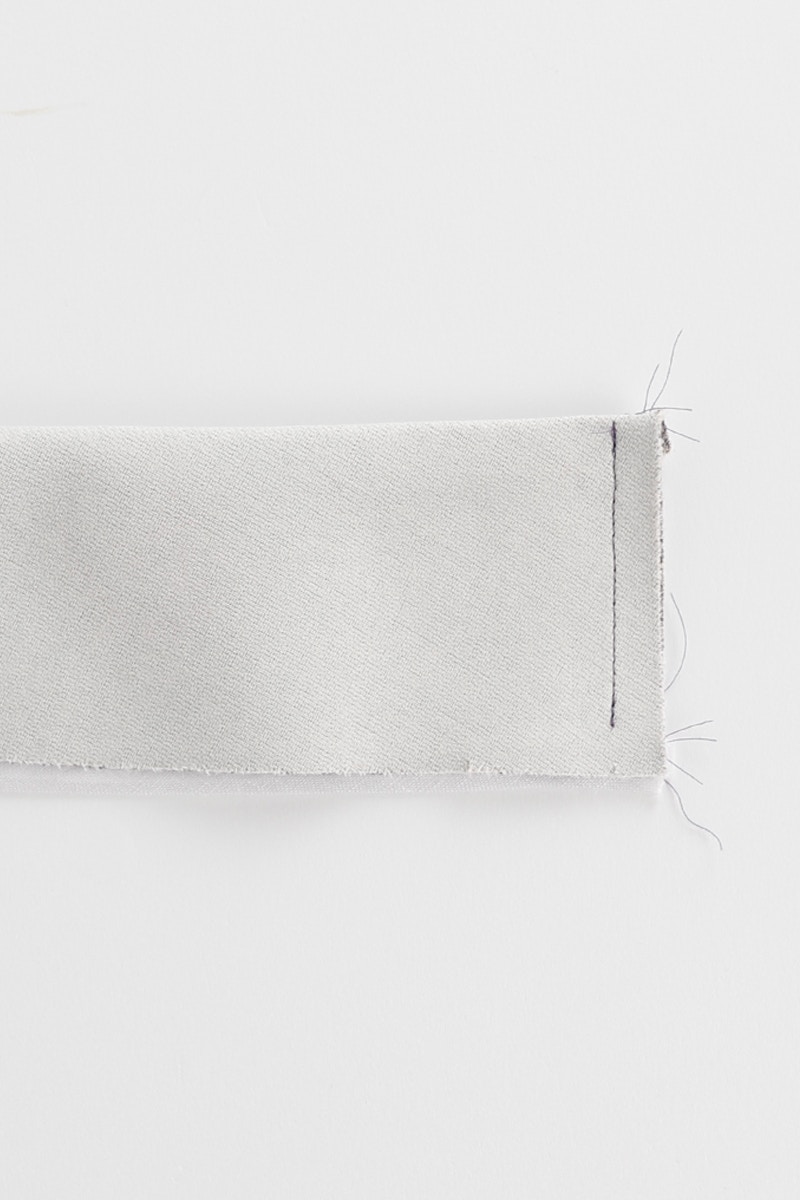
Fold the waistband in half lengthwise with right sides together. Pin, and then sew the right side end (as worn) closed with a 1cm seam, stopping 1cm before the raw edge.


At the left side end (as worn), bag out the waistband tab by pinning and then stitching down the short end. Finish 1cm before the edge, pivot 90 degrees and then sew along the long edge to the notch where the bias binding starts.
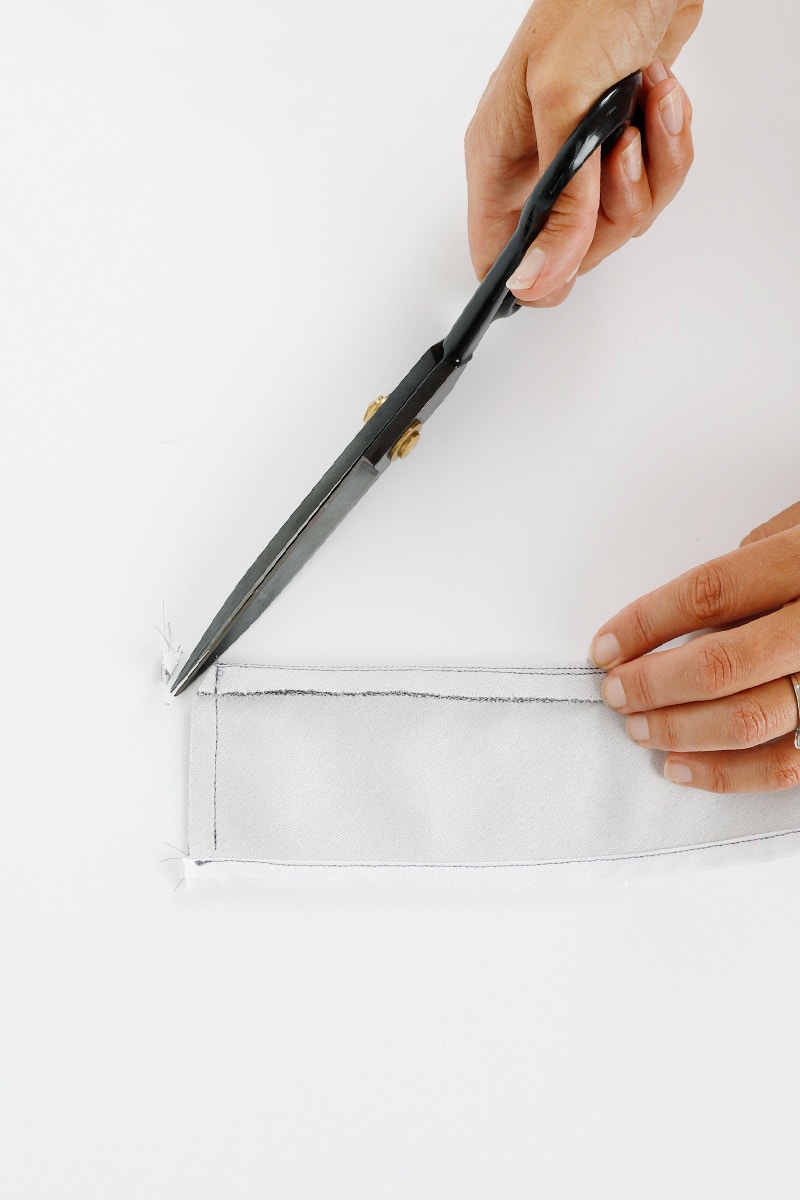
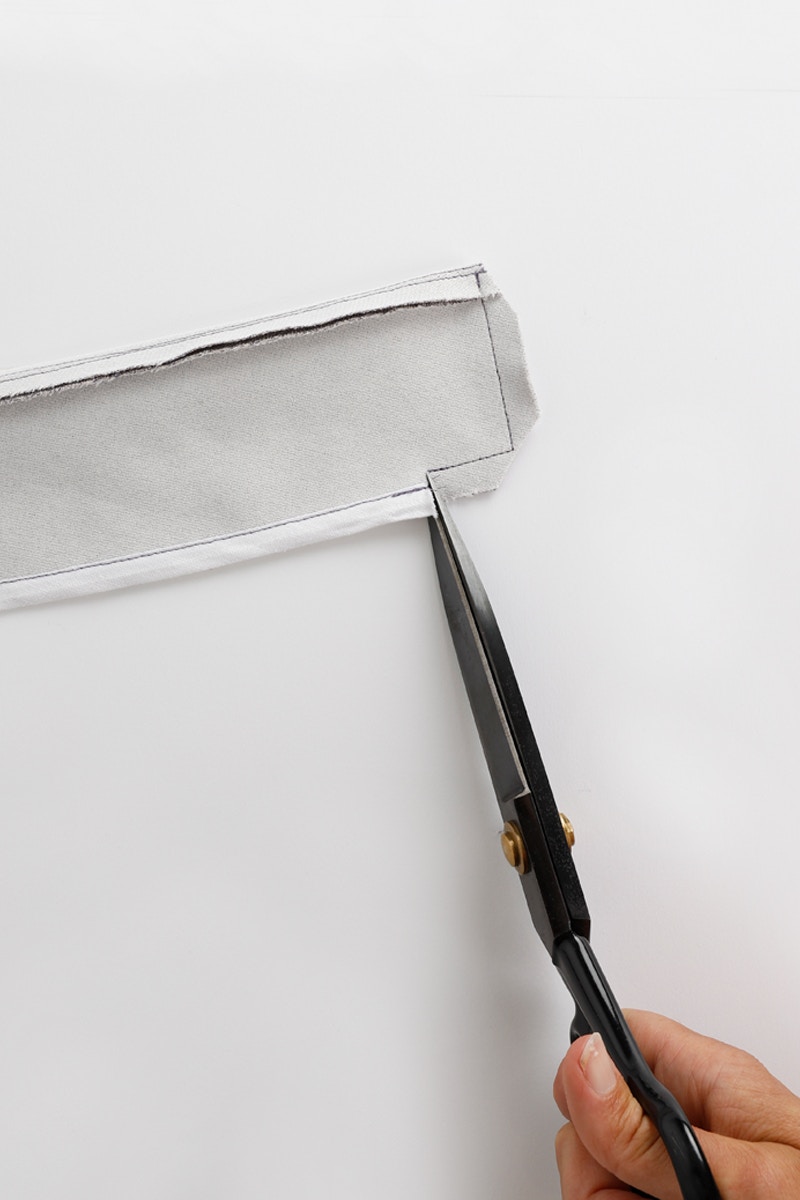
Trim your corners and clip into the seam allowance 1cm where the bias binding finishes.

Now turn your waistband right sides out with the help of a point turner and give it a press.

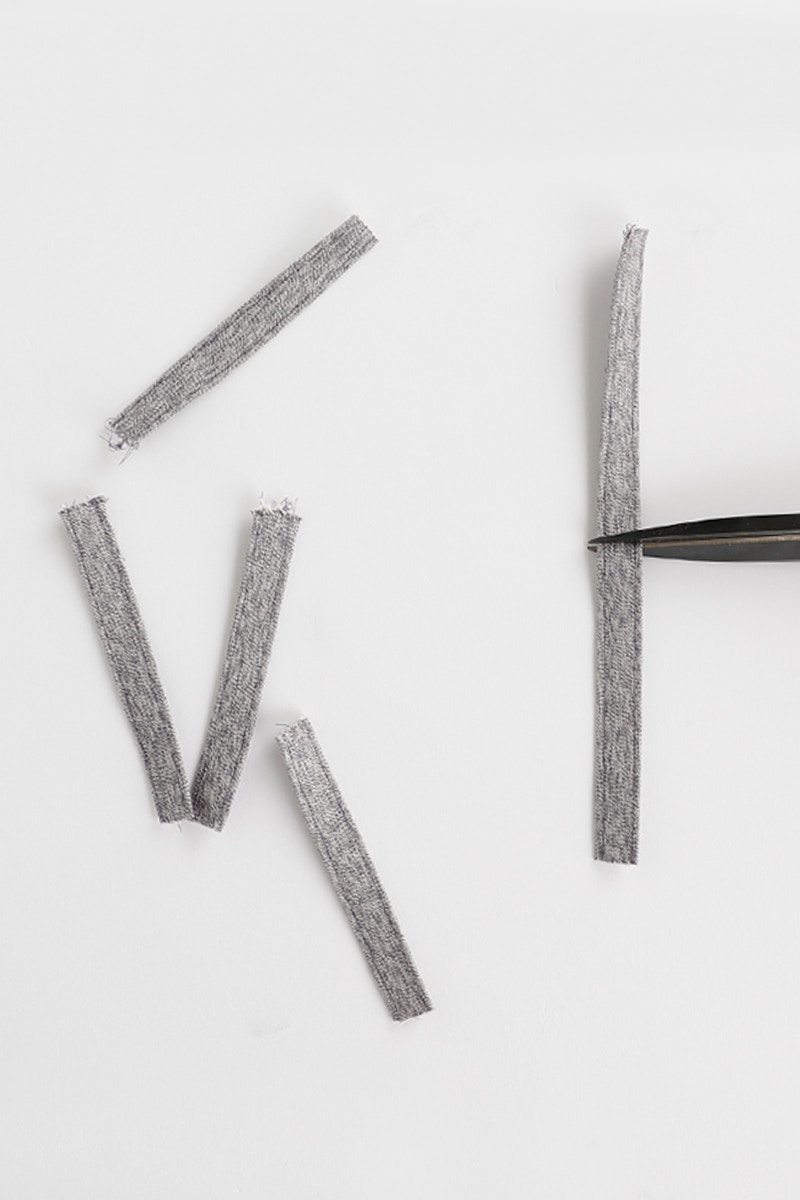
To sew the belt loops, neaten one long edge on each belt loop piece. Fold the belt loop pieces into threes, lengthwise with neatened edge on top. Edge stitch each long edge to hold it in place then cut each piece in to thirds. You will have six pieces in total.
5 — Assemble your Skirt and Hemming
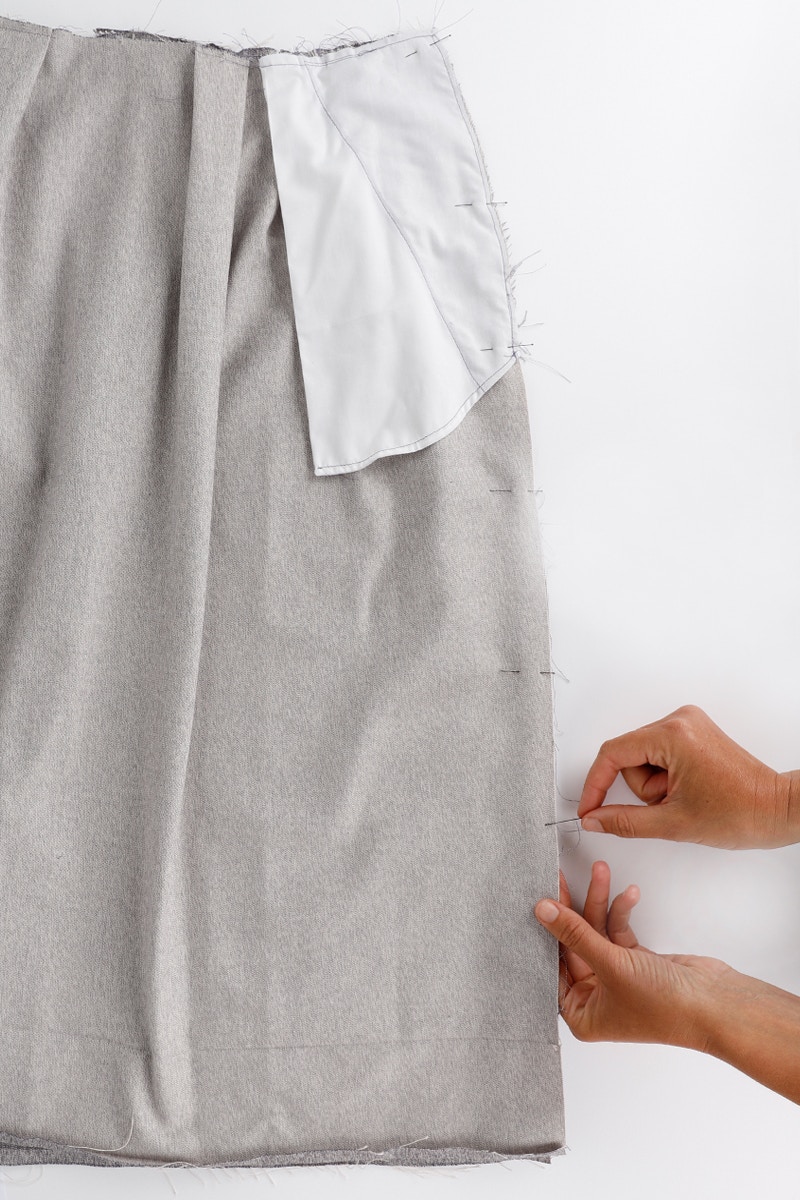

Next we will sew the side seams. With the right sides together, pin the font piece to the back at the side seam. Sew together then neaten the raw with your overlocker, or preferred method. Press the seam to the back. Repeat for both sides.
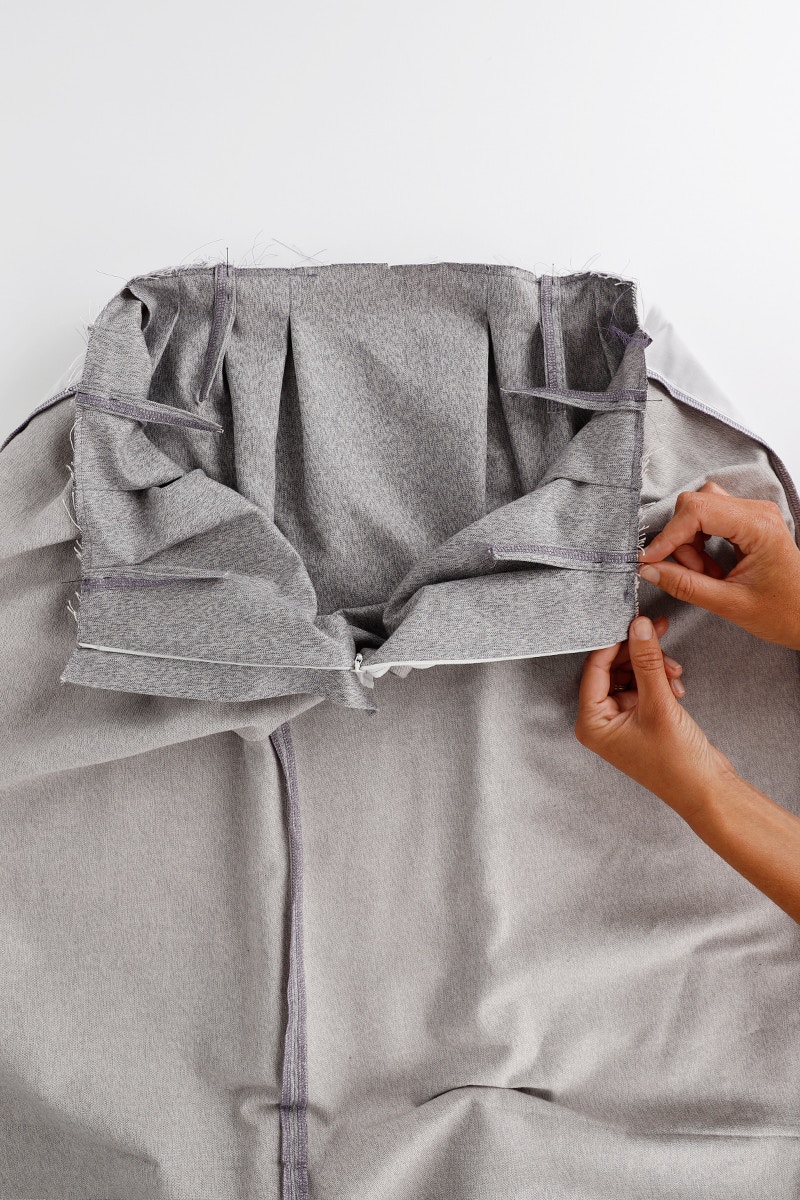
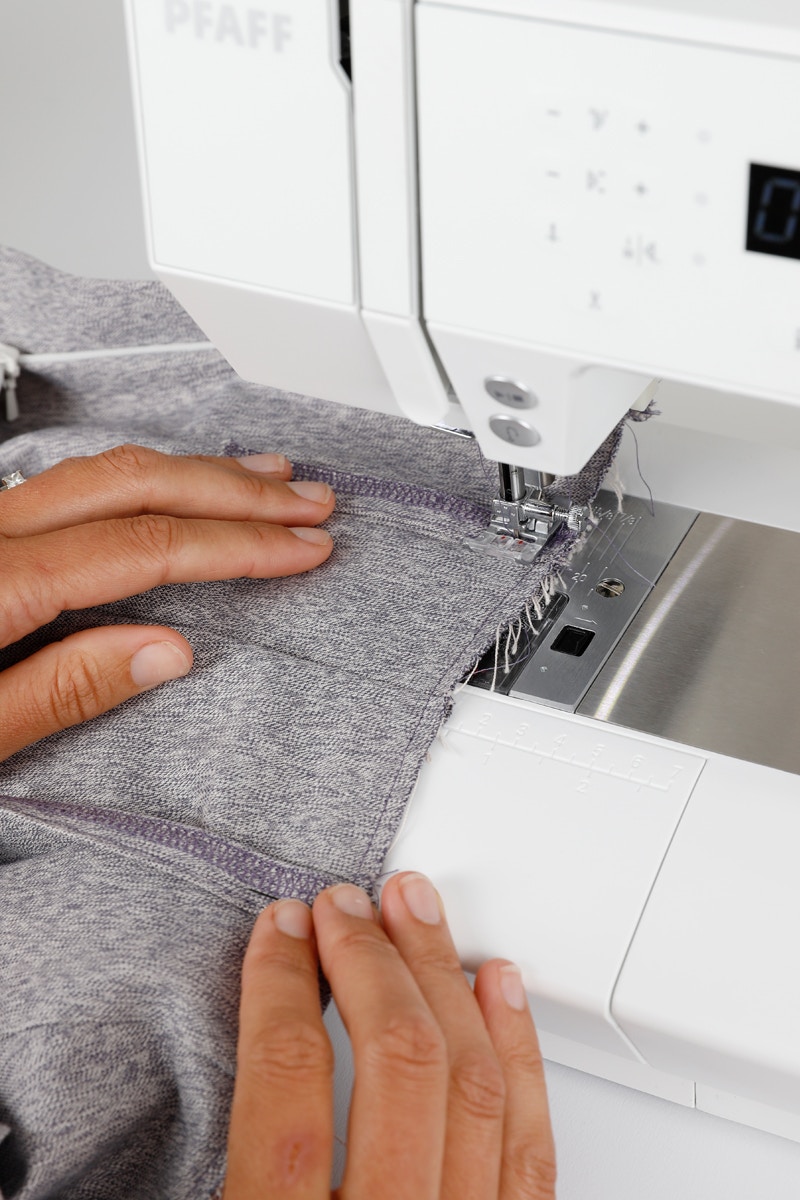
Next we will attach the belt loops and waistband. You might find it easiest to work with your skirt inside out when completing these steps.
First attach the belt loops. We placed two belt loops on the front, one at the centre pleat on each side of centre front. At the back, we placed four belt loops, one at the inverted pleat, and one at the pleat closest to the side seam on each side. Pin your belt loops, then baste them in place at the waist edge. Next, secure your belt loops by sewing 2cm from the raw edge, back tacking at the beginning and end of your stitching.

Now, pin your waistband to your skirt with the right sides together, matching the notches and leaving your waistband facing free. Sew the waistband to your skirt with a 1cm seam allowance.


Press the seam you have just sewn up, into the waistband. Pin the facing to the waistband to close the waist seam. Ensure that everything is laid flat. It can help to pin each side separately, working from the centre front to the centre back. Fold the bias binding on the waistband facing seam allowance back at each so it doesn't catch in the zip and to give a tidy finish.

Now, enclose the waistband by stitching in the ditch from the right side. Start and finish at the centre back, making sure to catch the facing on the underside, and that you are keeping the belt loops out of the way as you sew.
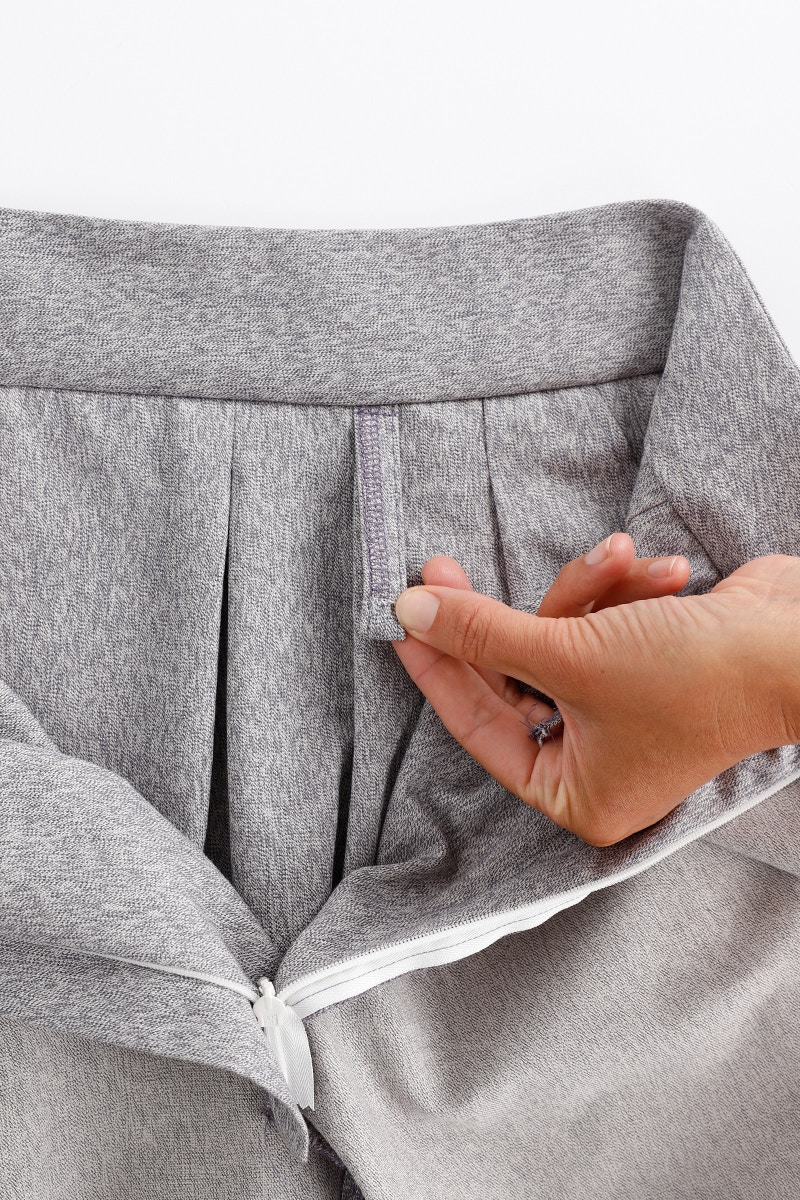

To finish your belt loops, fold the free end of the loops under 1cm. Next, pin them in place so the folded edge is flush with the top of the waistband.
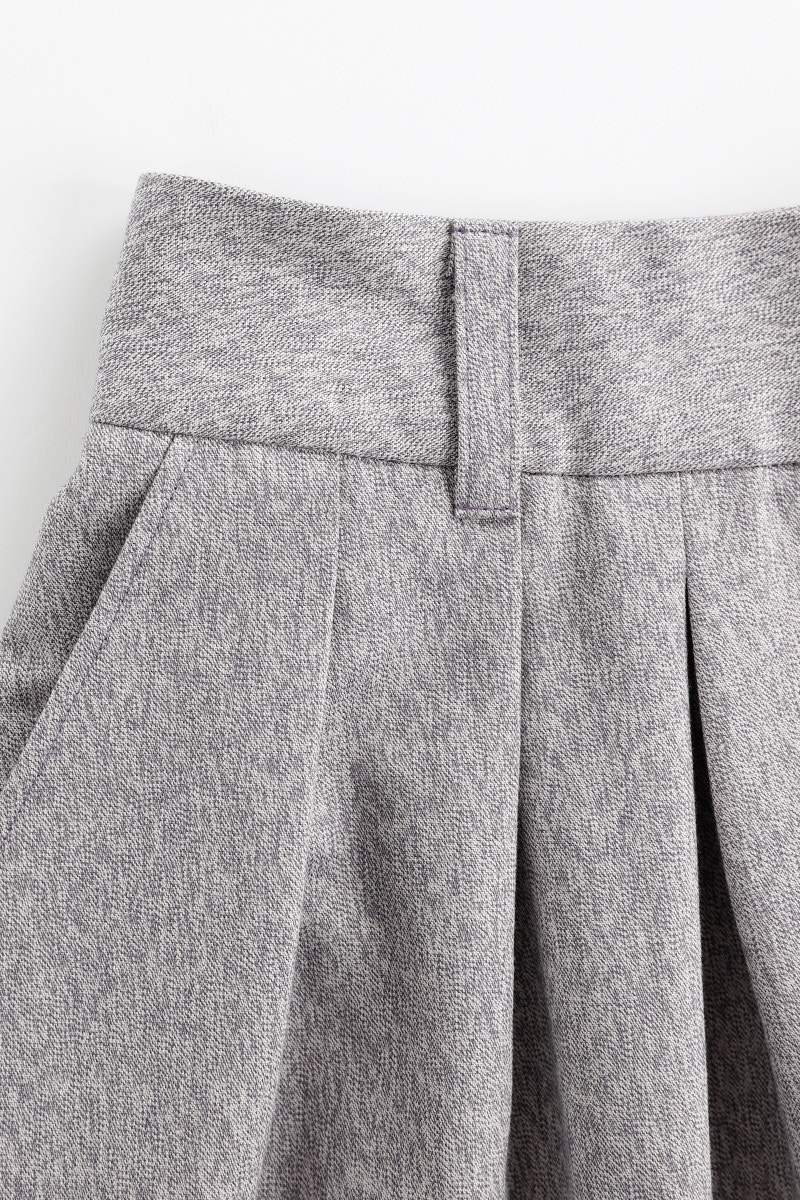
Now secure your belt loops in place at the top with a row of stitching, back tacking at the beginning and end. Flatten the belt loop and secure the bottom edge with stitching in the same way as the top. Repeat for all belt loops.
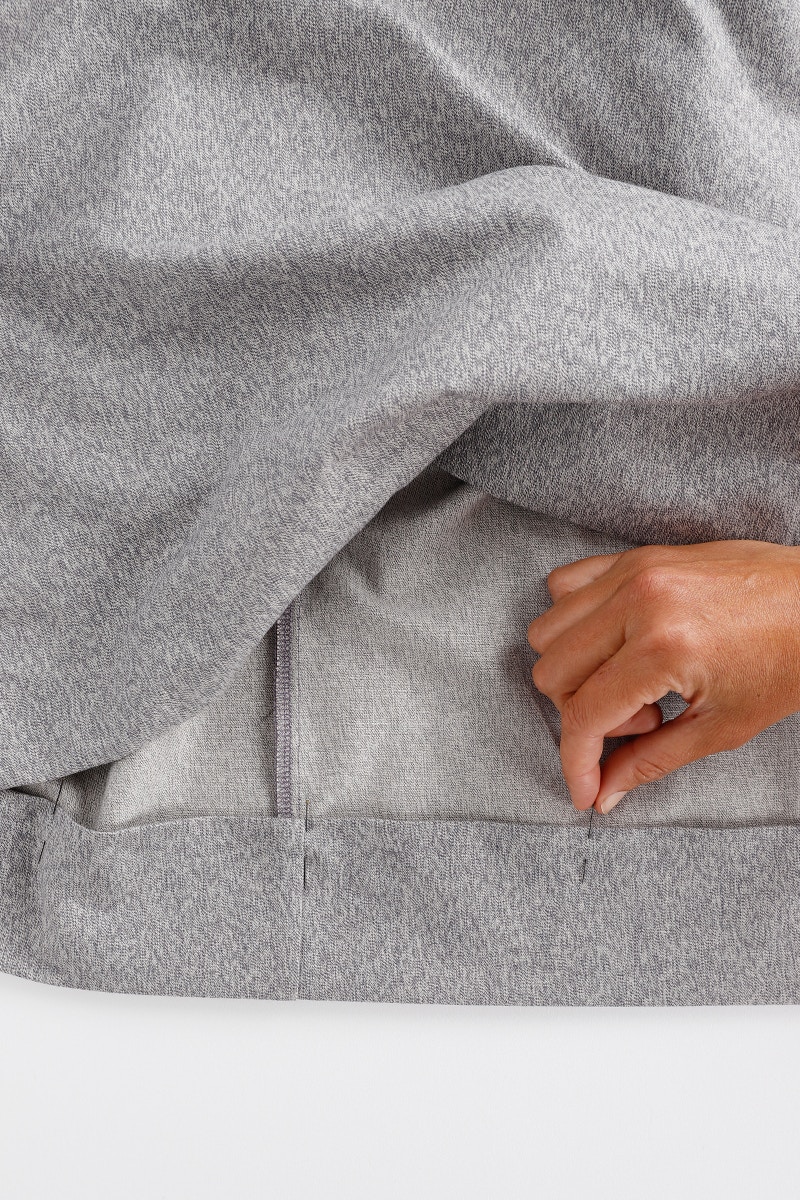
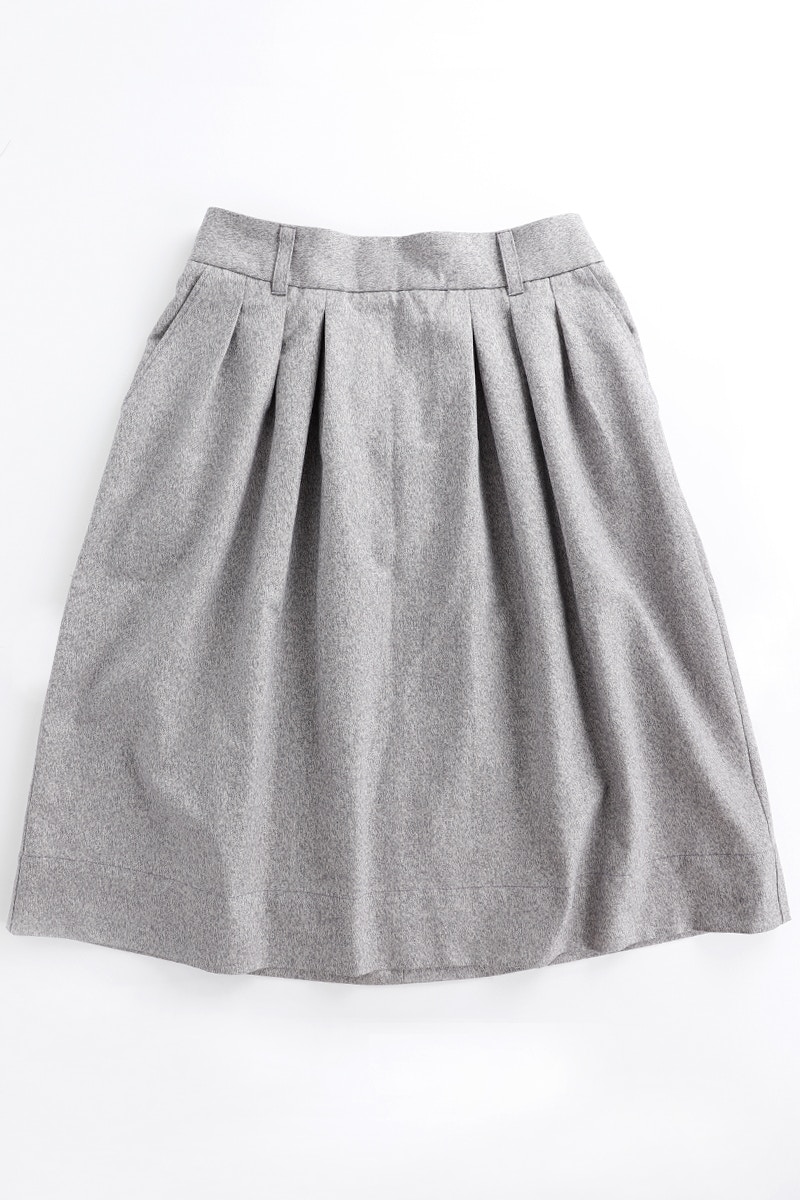
Next we will sew the hem. At the bottom of your skirt, fold under and press up the 1cm seam allowance, then fold up another 8cm for the hem. The pressing you did at the beginning will help here. Edge stitch your hem to close it up and give it a press. You're nearly finished!

To complete your skirt assembly, sew a buttonhole on the waistband tab. This is the left hand side of your skirt as it is worn. Use the Buttonhole Placement Template to help you. If your button varies in size to the recommended, you will need to adjust the length of your buttonhole accordingly. Sew a button on the righthand side of the waistband, opposite your buttonhole.

Clip your threads and give your August Skirt a final press. You're all finished!
Check out the August Skirt pattern in our Online Store here. Don't forget you can always email us via patterns@thefabricstore.co.nz if you need advice!
August makes from our wonderful community are also popping up over on Instagram, follow @makebytfs and use #TFSAugustSkirt so others can check out your creations!

